Our hotel is only one street back from the centre of the Old Town, so I when I got up this morning I decided to take a quick walk into the Long Market before breakfast to take some photos of the famous street before all the tourists were up. It was probably about 08:30 so not that early… but it worked. There was no one around. The Long Market was established in about the 13th century as a merchant road that led to a large marketplace away from the river, and it became the city’s main thoroughfare. It also became known as the Royal Route in the 15th to 16th centuries because it served as the precessional road for visiting Polish royalty – the monarchs would visit the city and be entertained in the tenement houses along the road, and during the various feasts the city council have fireworks displays here. The most prominent and of course, wealthy, citizens of the Royal City of Gdańsk lived along this route.
The Long Market was established in about the 13th century as a merchant road that led to a large marketplace away from the river, and it became the city’s main thoroughfare. It also became known as the Royal Route in the 15th to 16th centuries because it served as the precessional road for visiting Polish royalty – the monarchs would visit the city and be entertained in the tenement houses along the road, and during the various feasts the city council have fireworks displays here. The most prominent and of course, wealthy, citizens of the Royal City of Gdańsk lived along this route.



 After breakfast, we struck out to explore properly. Refreshingly most of the Old Town is laid out in a grid so instead of winding through confusing little streets, you could stroll down nice straight cobblestoned streets that would also allow you to (mostly) get far enough back to photograph the architectural gates that seemed to be at the end of most roads in the area.
After breakfast, we struck out to explore properly. Refreshingly most of the Old Town is laid out in a grid so instead of winding through confusing little streets, you could stroll down nice straight cobblestoned streets that would also allow you to (mostly) get far enough back to photograph the architectural gates that seemed to be at the end of most roads in the area. All the drainage down pipes have these fantastical stone dragons and gargoyles spitting water into the street – and for a short arse like me, most of them are at shoulder or head height, so they seem like they’d be a bit hazardous in really wet weather!
All the drainage down pipes have these fantastical stone dragons and gargoyles spitting water into the street – and for a short arse like me, most of them are at shoulder or head height, so they seem like they’d be a bit hazardous in really wet weather!
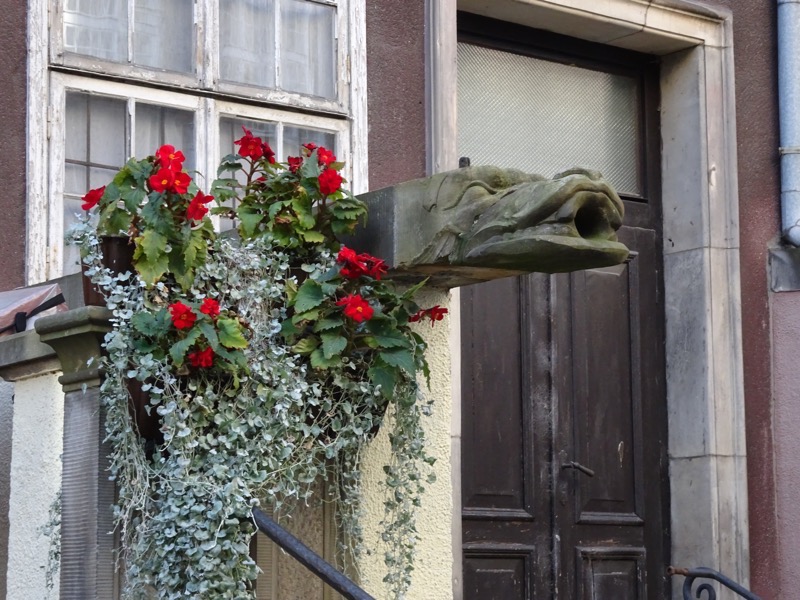 The decorative details on all the buildings is just overwhelming, everywhere you look is something new and interesting whether it some stonework, wrought ironwork, frescos, tiles or sculpture… it’s a veritable feast for the eyes.
The decorative details on all the buildings is just overwhelming, everywhere you look is something new and interesting whether it some stonework, wrought ironwork, frescos, tiles or sculpture… it’s a veritable feast for the eyes.

 This is known to be the oldest surviving original building in Gdańsk, knowing as Gotyk House which was built in 1453.
This is known to be the oldest surviving original building in Gdańsk, knowing as Gotyk House which was built in 1453. The tennement houses are lovely…
The tennement houses are lovely…
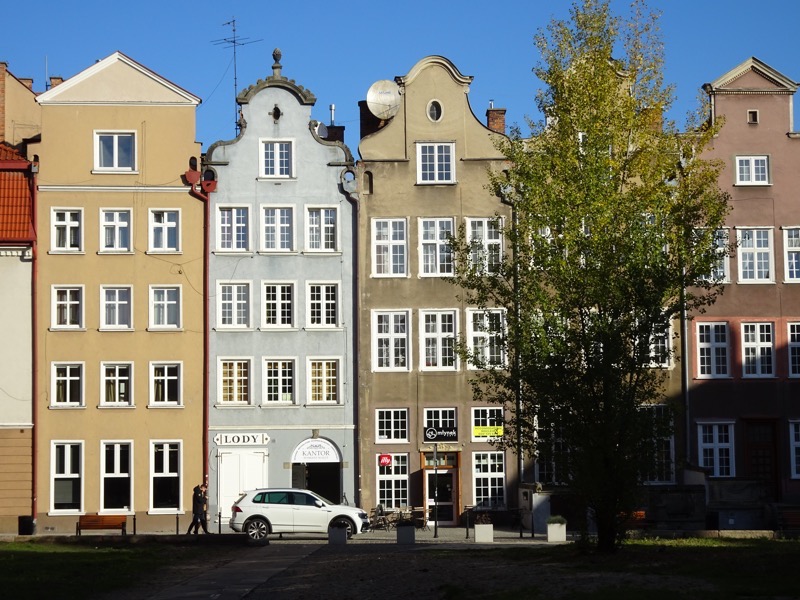 … I want one! Red please. 🙂
… I want one! Red please. 🙂 
We were making our way to St. Mary’s Church which is more formally know as (wait for it, ahem,) the Basilica of the Assumption of the Blessed Virgin Mary, or even cooler in Polish: the Bazylika Mariacka Wniebowzięcia Najświętszej Maryi Panny w Gdańsku! How’s that for a mouthful. St Mary’s is a Roman Catholic that saw it’s construction begin in either 1379 or 1343, they’re not sure. It is considered to be one of the top three largest brick chuches in the entire world with a volume of somewhere around 185,000m3 and 190,000m3 (no idea why they measure churches for volume but there it is … the other two are the San Petronio Basilica in Bologna at 258,000 m3 (better add that to my list) and Munich’s Frauenkirche which I have a sneaky suspicion we saw back in ’95 and it is roughly the same size as this St Mary’s.
Between 1536 and 1572 the church was used for both Roman Catholic masses and Lutheran services right up until 1945, when Danzig became Polish Gdańsk. It seems the church is mostly known this unusual arrangement, and for its enormous size – it is 105.5m long, 66m and can fit roughly 25,000 people inside. 

 Inside the church is surprisingly stark (like the Frauenkirche in Munich), which was confusing when I first walked in and said to yale, ‘I thought this was a catholic church but it looks kinda Lutheran in here.’, and was again confused when I saw a confessional a bit later… but the dual denomination situation described above kinda explains that I guess.
Inside the church is surprisingly stark (like the Frauenkirche in Munich), which was confusing when I first walked in and said to yale, ‘I thought this was a catholic church but it looks kinda Lutheran in here.’, and was again confused when I saw a confessional a bit later… but the dual denomination situation described above kinda explains that I guess.
 The enormous baptismal font is unusually placed almost right inside the door – about 50m from the nave.
The enormous baptismal font is unusually placed almost right inside the door – about 50m from the nave. We saw this fancy commercial votive candle system – copyrighted in Ireland… sometimes I think we forget that big churches are more run as big business these days.
We saw this fancy commercial votive candle system – copyrighted in Ireland… sometimes I think we forget that big churches are more run as big business these days.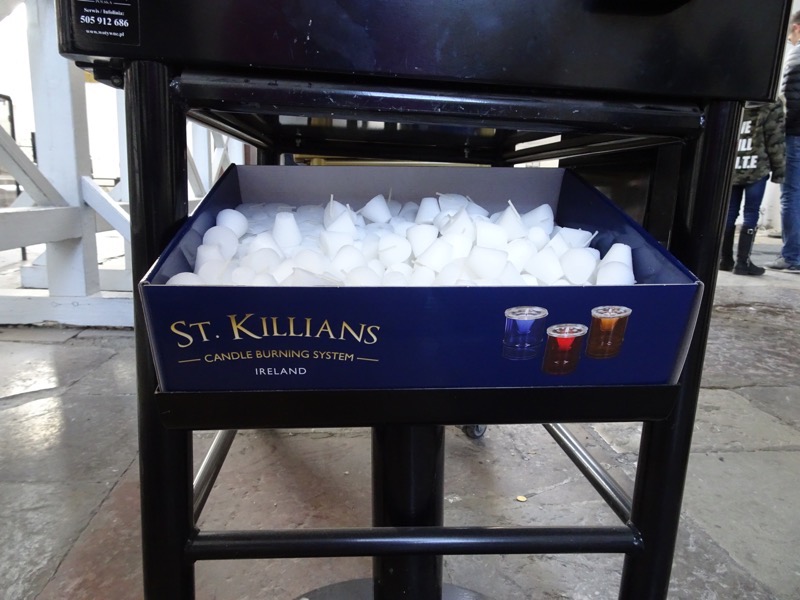
 Anyway, St. Mary’s is a triple-aisled hall church with a triple-aisled transept – which basically means that the main nave and the two adjacent transepts are of roughly similar length, height and width. The building is an excellent example of late Gothic architecture. In the late 1500s to early 1600s the church was rebuilt and enlarged somewhat with the final footprint of the church not being achieved until over 150 years since the initial construction had started.
Anyway, St. Mary’s is a triple-aisled hall church with a triple-aisled transept – which basically means that the main nave and the two adjacent transepts are of roughly similar length, height and width. The building is an excellent example of late Gothic architecture. In the late 1500s to early 1600s the church was rebuilt and enlarged somewhat with the final footprint of the church not being achieved until over 150 years since the initial construction had started. There are so many different donation boxes in this church – all different sizes, and marked to all different causes/saints/purposes.
There are so many different donation boxes in this church – all different sizes, and marked to all different causes/saints/purposes.
 Embroidered banner: ‘God, Honour and Homeland’. No idea what period, but I want to say, late 19th or 20th centuries, just because this place isn’t climate controlled and the goldwork isn’t that tarnished.
Embroidered banner: ‘God, Honour and Homeland’. No idea what period, but I want to say, late 19th or 20th centuries, just because this place isn’t climate controlled and the goldwork isn’t that tarnished.

The Pulpit is pretty impressive – another later period addition from 1762. Apparently designed by Johann Heinrich Meissner and the oil paintings decorating it were done by Isaac van den Block.


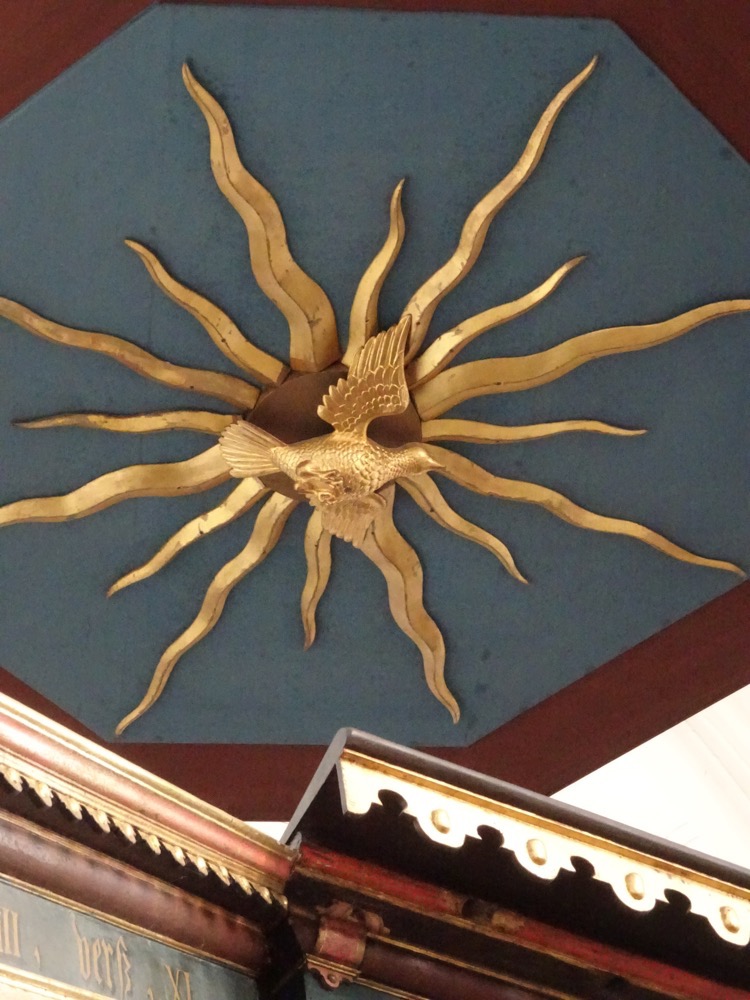

To the left of the pulpit you can find the Rajnold Chapel, where there is a 19th century replica of Hans Memling’s famous triptych, “The Last Judgement”. The original is kept in the town’s National Museum – it was painted between 1467 and 1471.and the painting itself has quite a cool history. It was commissioned by Angelo Tani, an agent of the Medici at Bruges, but the painting was captured at sea by Paul Beneke, a privateer from Danzig. Apparently it took a lengthy lawsuit against the Danzig Hanseatic League to see it returned to Italy. Eventually it somehow made its way back to St Mary’s, but of course was then moved to the National Museum for preservation. The central panel shows Jesus sitting in judgment, while St Michael is weighing souls and sending the damned to Hell, while the saved are being guided to heaven by St Peter and angels.
The central panel shows Jesus sitting in judgment, while St Michael is weighing souls and sending the damned to Hell, while the saved are being guided to heaven by St Peter and angels.
I can’t find any information on this artwork at all…
 but here is your little bit o’ medieval weirdness for the day:
but here is your little bit o’ medieval weirdness for the day: This rather incongruous memorial was to remember the 96 victims of a plane crash in Smolensk on 10th April 2011. Lech Kaczyński, the fourth President of the Republic of Poland, was on the Polish Air Force Tu-154 when it crashed outside of Smolensk, as was his wife, First Lady and Economic Minister for Poland at the time.
This rather incongruous memorial was to remember the 96 victims of a plane crash in Smolensk on 10th April 2011. Lech Kaczyński, the fourth President of the Republic of Poland, was on the Polish Air Force Tu-154 when it crashed outside of Smolensk, as was his wife, First Lady and Economic Minister for Poland at the time. Directly opposite this very modern memorial is an enormous medieval astronomical clock. Standing 14m tall, it is said to have been constructed by Hans Düringer between 1464 and 1470. Like every other monumental medeival astronomical clock, it is said that Düringer had his eyes put out after he made it so he could not make another – which begs the question: why would a medieval master clockmaker accept such a commission if ultimately he was going to be blinded to stop him from replicating his work?! Dunno… urban myths alive and well in the middle ages.
Directly opposite this very modern memorial is an enormous medieval astronomical clock. Standing 14m tall, it is said to have been constructed by Hans Düringer between 1464 and 1470. Like every other monumental medeival astronomical clock, it is said that Düringer had his eyes put out after he made it so he could not make another – which begs the question: why would a medieval master clockmaker accept such a commission if ultimately he was going to be blinded to stop him from replicating his work?! Dunno… urban myths alive and well in the middle ages. The clock has some pretty complex dials that show time, date, phases of the moon, the position of the moon and sun in relation to the zodiac signs, and the calendar of saints.
The clock has some pretty complex dials that show time, date, phases of the moon, the position of the moon and sun in relation to the zodiac signs, and the calendar of saints. 


 Another unlabelled, anonymous fresco/sculpture.
Another unlabelled, anonymous fresco/sculpture.
The original high altar was created in 1511–1517 by Michael of Augsburg is currently undergoing restoration, right here in the church. They have the space, so why not I guess. You can see the altar all pulled apart, and restorers were working on it while we were visiting.
You can see the altar all pulled apart, and restorers were working on it while we were visiting.

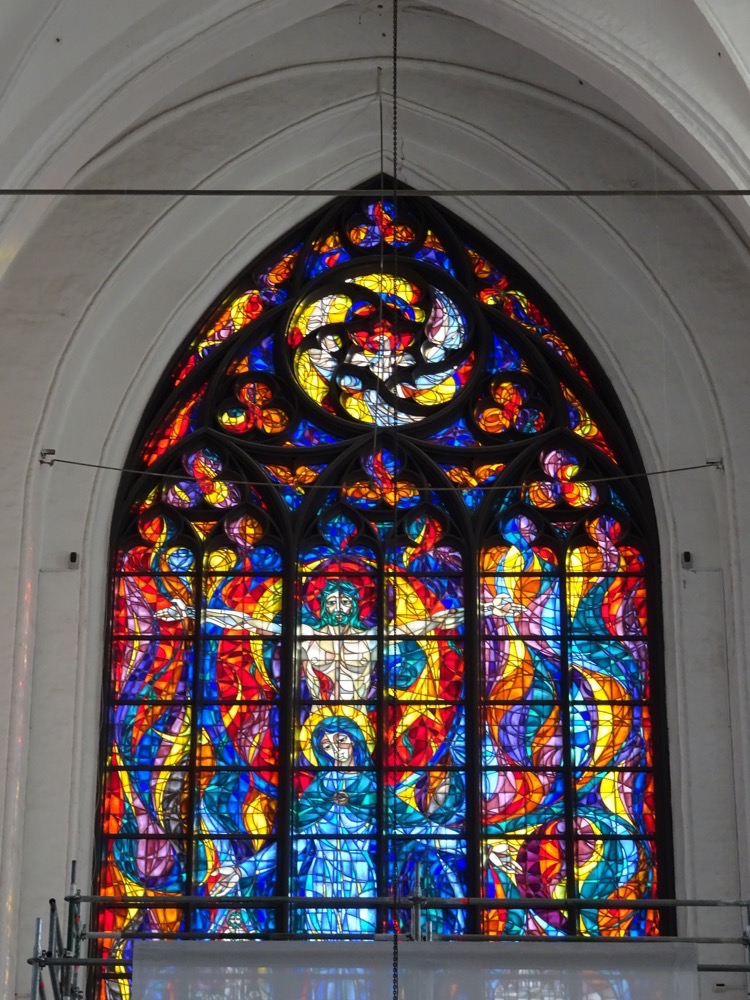 From the altar looking back down the nave – it really is an enromous church.
From the altar looking back down the nave – it really is an enromous church. I think this is a representation of the ten commandments from 1485… there is supposed to be a piece here of that nature, though the artist is unknown.
I think this is a representation of the ten commandments from 1485… there is supposed to be a piece here of that nature, though the artist is unknown.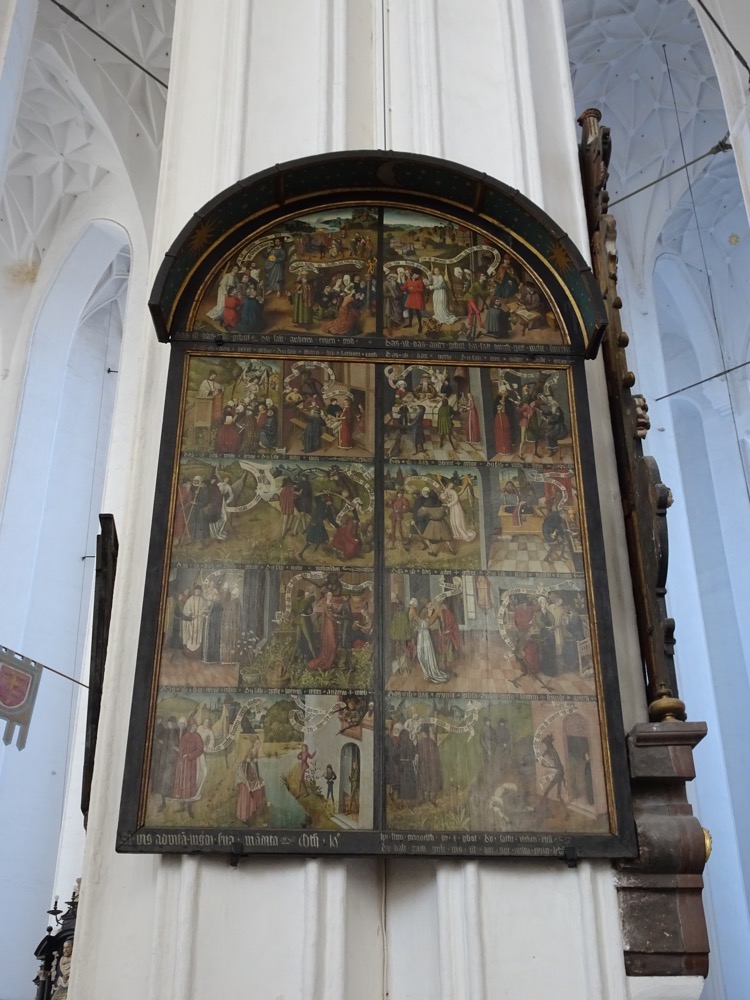


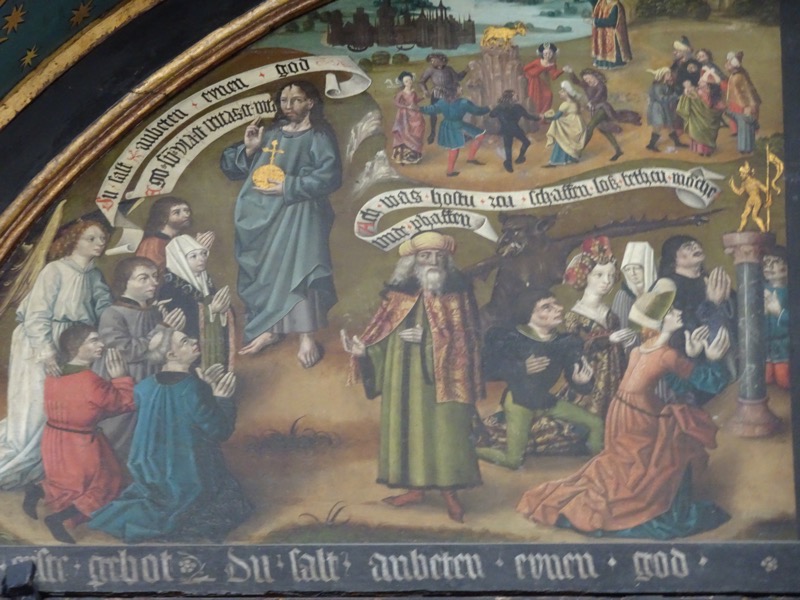 Organ – no real church is complete without one.
Organ – no real church is complete without one.
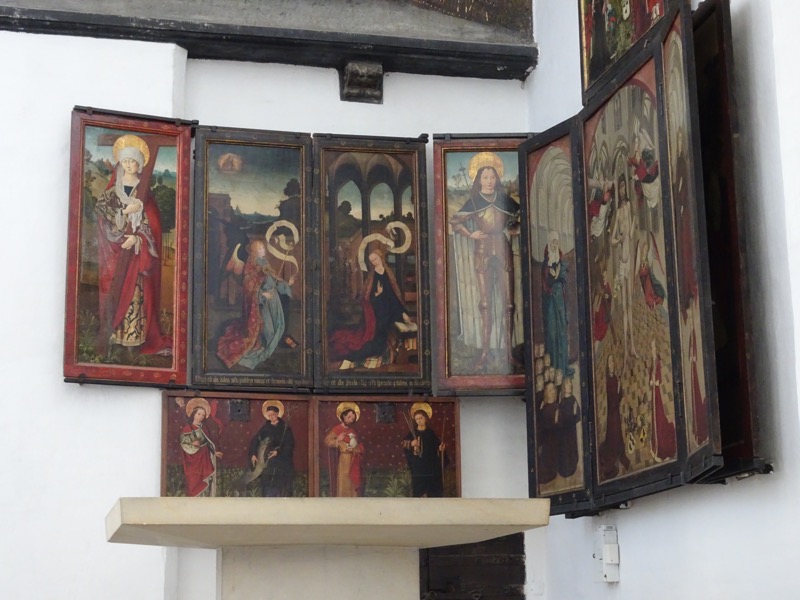 More medieval paintings with no information or attribution 🙁
More medieval paintings with no information or attribution 🙁 
 Photographing these paintings in this evironment is worse than in a musuem under glass – the camera just can’t handle the brightness ration from the stark white walls and the glare forming from them on the surface of the canvasses is almost impossible to avoid.
Photographing these paintings in this evironment is worse than in a musuem under glass – the camera just can’t handle the brightness ration from the stark white walls and the glare forming from them on the surface of the canvasses is almost impossible to avoid.



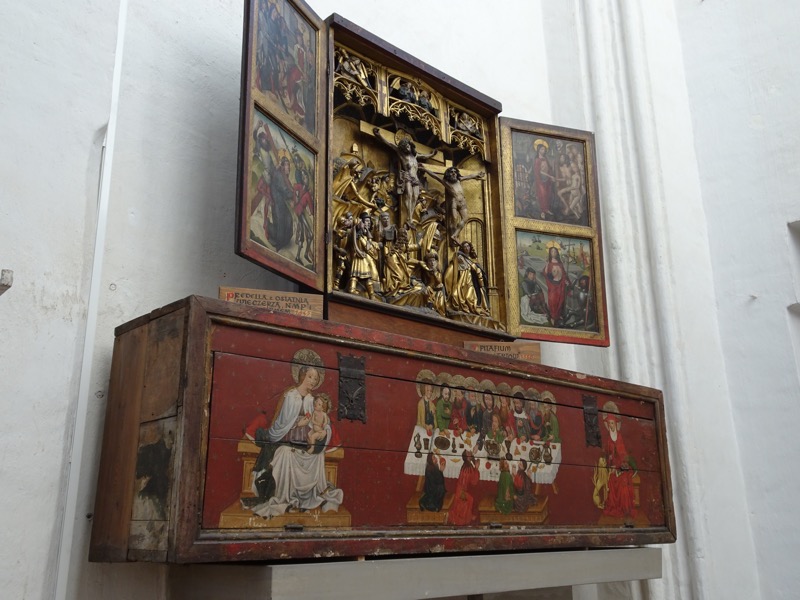



 This is me… looking at all these cool paintings and then not being able to find any information on them whatsoever.
This is me… looking at all these cool paintings and then not being able to find any information on them whatsoever.



After we left the quiet enormousness of St Mary’s we went for a walk down the Long Lane which runs parallel to the Long Market and ends at the Gdańsk Great Armory.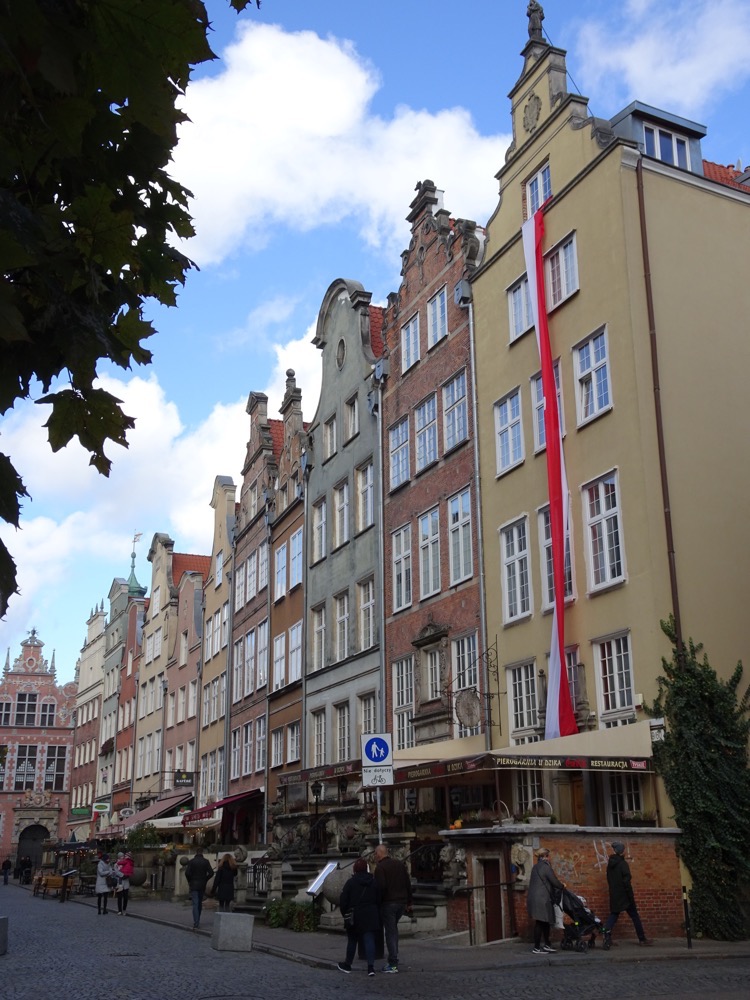
The Great Armory in Gdańsk or The Arsenal is the most decorative secular mannerist building in the town. Towards the end of the 16th century, a growing military threat from Sweden prompted the Gdańsk burghers and merchants to prepare for war. Given there was a lack of suitable warehousing for war equipment they designed this purpose-built arsenal building. To build the arsenal, the burghers hired the most eminent architect of the era, Antony van Obberghen, because a warehouse can’t just be a warehouse, right? And work on the armoury began in 1602 to 1605. It was made of small red Dutch bricks with sandstone decorations and covered in rich gilding. It actually looks like four separate tenement houses (especially from above) but it actually one building.
 Directly outside the armoury, the entire street is largely taken over by amber shops and by souvenir shops. You can face in any direction in this town and see amber for sale.
Directly outside the armoury, the entire street is largely taken over by amber shops and by souvenir shops. You can face in any direction in this town and see amber for sale.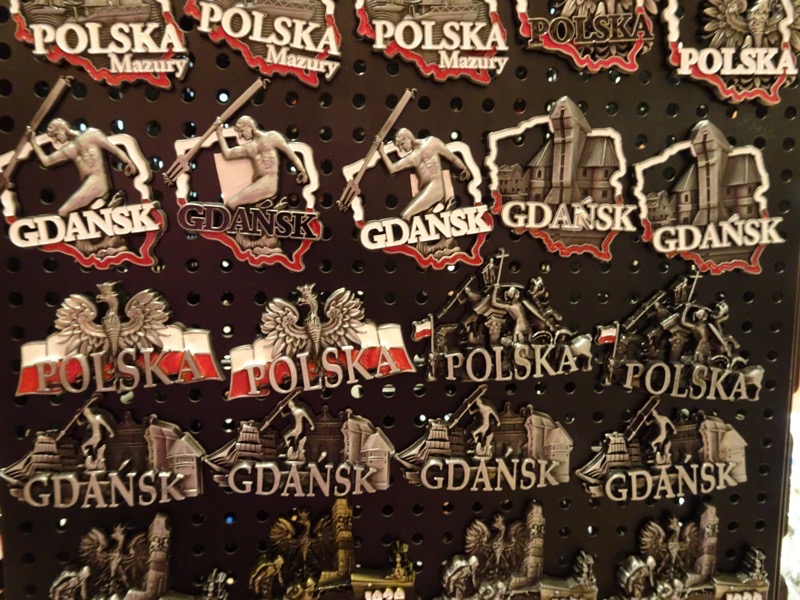


Over onto the end of the Long Market now, you can see the Golden Gate which is one of the most notable tourist attractions of the city and is located at one end of the Royal Route (the Green Gate is at the other river end). 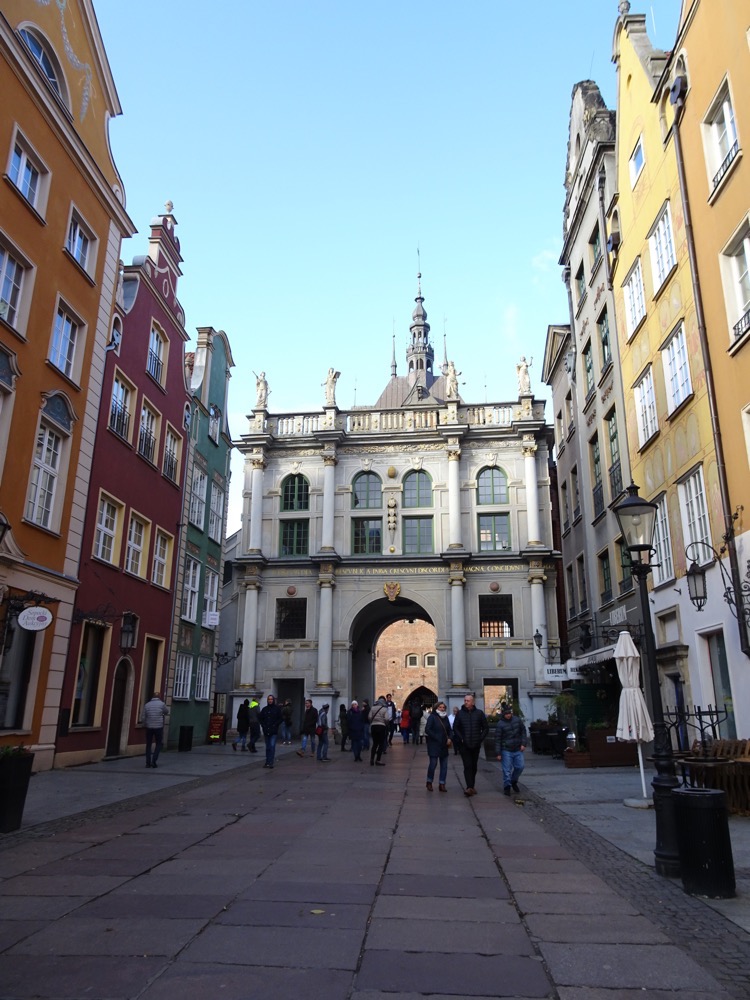
The Golden Gate was built in 1612–14 to replace an old 13th-century gothic gate, which formed part of the old city fortifications. Both sides of the gate have figures symbolizing the qualities of an ideal citizen. They were designed in 1648 by Jeremias Falck and then reconstructed in 1878 due to the originals being damaged by weathering and oxidising over time.
On the west side these qualities are: (in Latin, of course) On the west side of the gate, the listed qualities are (in Latin of course):
Pax (Peace)
Libertas (Freedom)
Fortuna (Wealth)
and Fama (Fame)
On the East (Long Lane) side of the gate, they have listed:
Concordia (Agreement)
Iustitia (Justice),
Pietas (Piety)
and Prudentia (Prudence).
 There are just too many very fancy and impressive buildings in the Long Market. I can’t describe them all, but have included many photographs to show how stunning this town is.
There are just too many very fancy and impressive buildings in the Long Market. I can’t describe them all, but have included many photographs to show how stunning this town is.

 The older High Gate which is attached to the Golden Gate is a Renaissance city gate now at the main vehicular entrance to the Old Town.
The older High Gate which is attached to the Golden Gate is a Renaissance city gate now at the main vehicular entrance to the Old Town. 

Directly opposite the High Gate and the Golden Gate is the Prison Tower. It was established as part of the medieval fortifications, and the foundations of the Prison Tower are from the beginning of the 14th century. The Tower has a long-tower with a pointed arch and a rectangular courtyard. These were built at various stages between 1379-1382 and 1416-1418. Henryk Hetzel was the architect and he allegedly erected the highest level a “donkey back”, but I can’t see it. Michał Enkinger later came along and topped the Tower with a tent roof which burned down in 1577 during the siege of Gdańsk by Stefan Batory’s army (long story omitted here). For over two centuries, from 1604 to 1858, this was the largest prison in Europe. Records show no known successful escape attempts, so we can guess it was a pretty effective one at that. Also located in the Prison Tower were Torture Chambers and the hangman’s headquarters which look like a small renaissance palace.
For over two centuries, from 1604 to 1858, this was the largest prison in Europe. Records show no known successful escape attempts, so we can guess it was a pretty effective one at that. Also located in the Prison Tower were Torture Chambers and the hangman’s headquarters which look like a small renaissance palace.
Today, the Prison Tower contains a Torture Museum (pass) and an Amber Museum (also pass), so we had a look around the medieval building but didn’t visit inside.


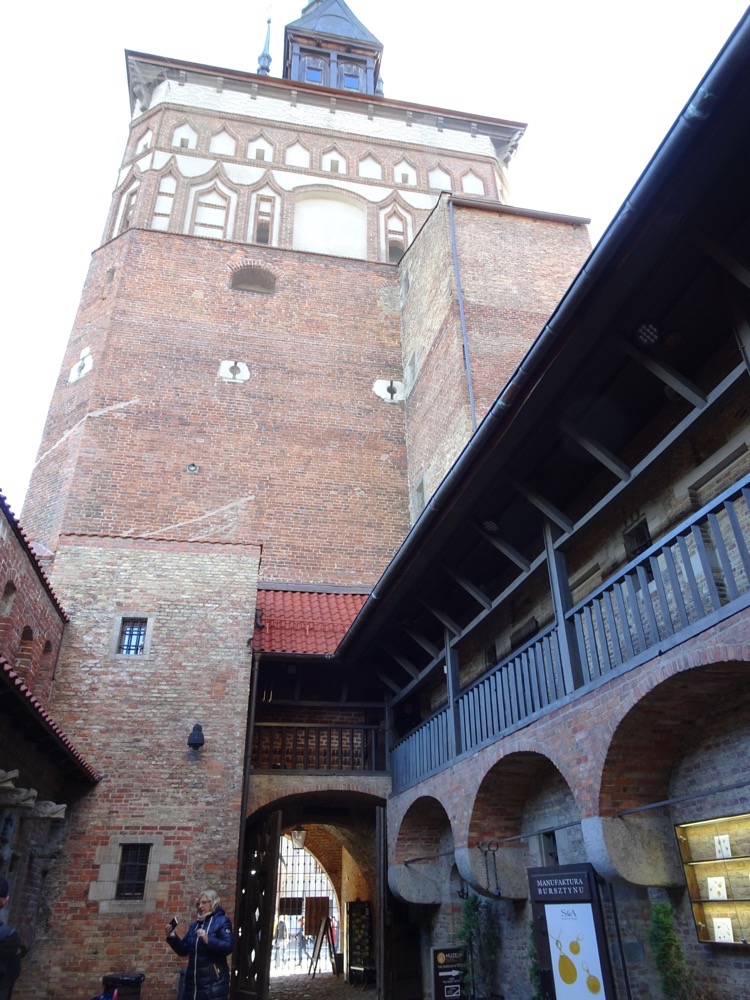
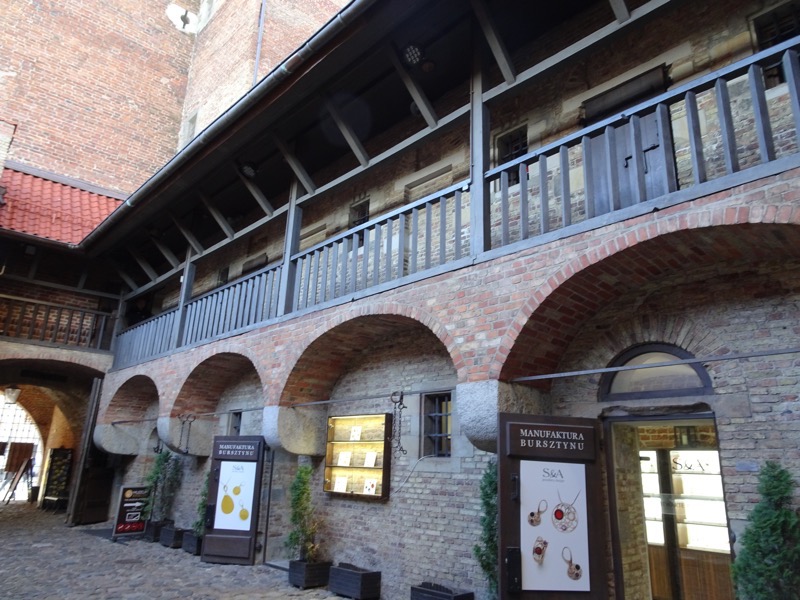

The Brama Wyżynnai gate is another gate built in 1588 gate and at one time was the main entrance to the city. It features many symbols of Gdansk, but also of Prussia & Poland. After this we went through the Golden Gate and back into the Long Market to marvel at the beautiful tennement buildings.
After this we went through the Golden Gate and back into the Long Market to marvel at the beautiful tennement buildings. The Gdańsk Main Town Hall is a historic building located in the middle of the Long Market and it is considered to be one of the best the Gothic-Renaissance style historic buildings in the city. It is built at the intersection of the Long Lane and Long Market, and currently houses the History Museum of the City of Gdańsk and a weird modern art exhibition of Kazakhstani photographers?!
The Gdańsk Main Town Hall is a historic building located in the middle of the Long Market and it is considered to be one of the best the Gothic-Renaissance style historic buildings in the city. It is built at the intersection of the Long Lane and Long Market, and currently houses the History Museum of the City of Gdańsk and a weird modern art exhibition of Kazakhstani photographers?! 

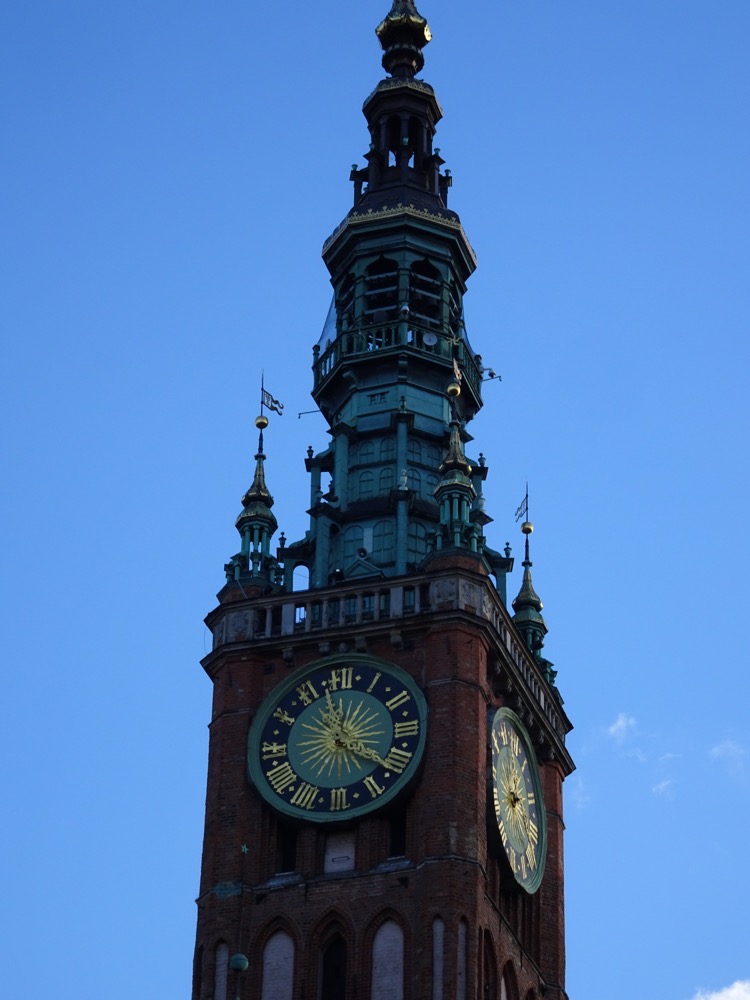 So many of these beautiful tenement houses have a long and distinguished history all of their own – for example, this red building below is called, the Schumann House. It was designed and built for a man named, Hans Conert the Younger, by an unknown architect in around 1560. The building was known as the King’s House as the top of the house has a sculpture of Zeus. Now, it houses a Tourist Information Centre… but my point is, every one of these buildings has a history.
So many of these beautiful tenement houses have a long and distinguished history all of their own – for example, this red building below is called, the Schumann House. It was designed and built for a man named, Hans Conert the Younger, by an unknown architect in around 1560. The building was known as the King’s House as the top of the house has a sculpture of Zeus. Now, it houses a Tourist Information Centre… but my point is, every one of these buildings has a history. It’s nearly midday and the tourists are finally up and about – I am very glad I came out earlier and took some photos of the empty streets.
It’s nearly midday and the tourists are finally up and about – I am very glad I came out earlier and took some photos of the empty streets.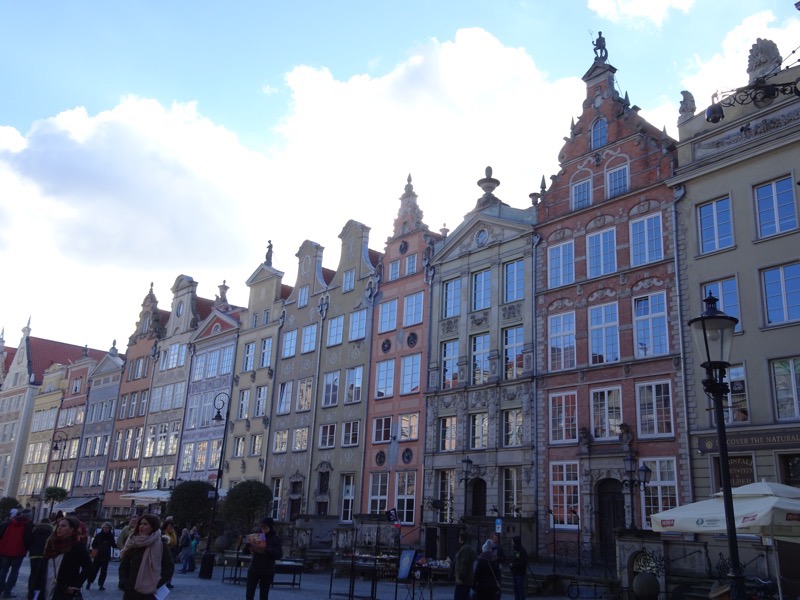


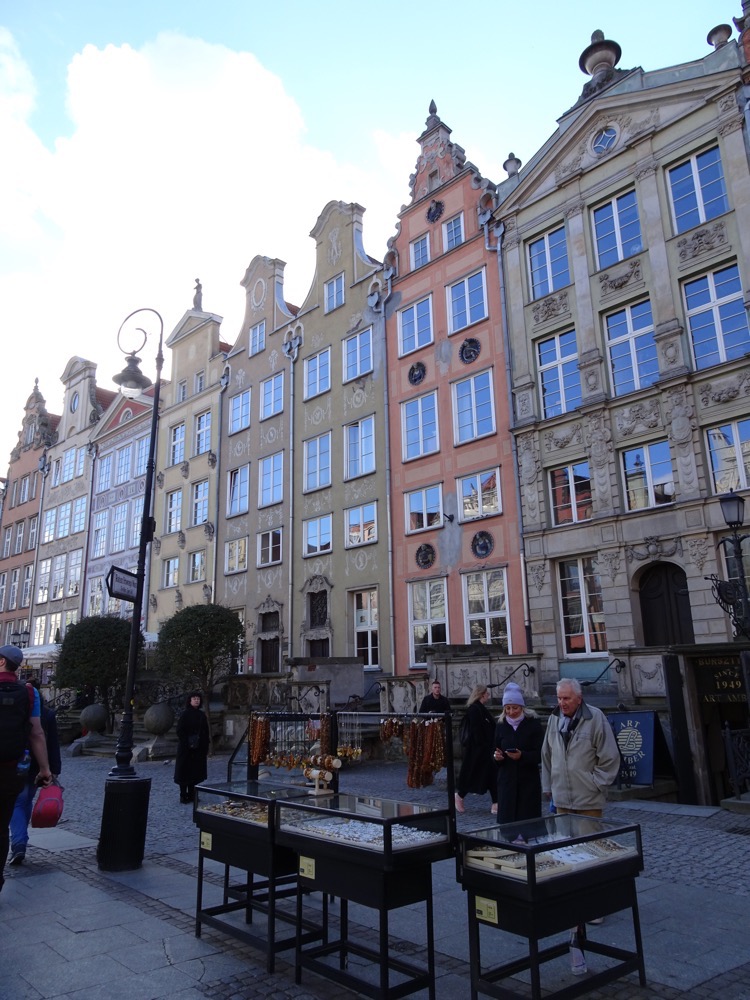
 Neptune’s Fountain – is an iconic fountain of Gdańsk. It was constructed by a local Mayor, Bartłomiej Schachmann in 1549 and is located outside a building called Artus Court because there was a natural well here. The fountain was proposed and approved in 1549 but didn’t ‘open’ until 1633 due to a series of construction delays – the Artus Court building was being renovated, there were problems with the water system, and then the terribly inconvenient Thirty Years’ War.
Neptune’s Fountain – is an iconic fountain of Gdańsk. It was constructed by a local Mayor, Bartłomiej Schachmann in 1549 and is located outside a building called Artus Court because there was a natural well here. The fountain was proposed and approved in 1549 but didn’t ‘open’ until 1633 due to a series of construction delays – the Artus Court building was being renovated, there were problems with the water system, and then the terribly inconvenient Thirty Years’ War.
The fountain was renovated in 1927, the fountain was renovated but got badly damaged during World War II, so they moved it to Parchów, and didn’t return it to its place until July 1957. It was renovated again in 1988, and again in September 2011 and April 2012… seems these things are pretty high maintenance.

 At the other end of the Long Market – the back of the Green Gate.
At the other end of the Long Market – the back of the Green Gate.
 So many beautiful buildings! It’s simply overwhelming… so many beautiful facades to look at and so many wonderfully detailed frontages.
So many beautiful buildings! It’s simply overwhelming… so many beautiful facades to look at and so many wonderfully detailed frontages.


The Green Gate is on the river end of the Long Market and marks the start of the Royal Route. 
The Green Gate was apparently inspired by the Antwerp City Hall building and was built in 1568-71 as a residence for the Polish Monarchy. It was commissioned from the master architect, Regnier (or Reiner van Amsterdam), and bring some Flemish architectural influence to Gdańsk.
 More tenement buildings lining the river to either side of the Green Gate.
More tenement buildings lining the river to either side of the Green Gate. Across the river is Granary Island – we popped over there very briefly, but it seemed full of modern hotels, a ferris wheel (called the Amber Sky of course) and several bars that appeared to largely cater to American tourists (Jack Lives Here).
Across the river is Granary Island – we popped over there very briefly, but it seemed full of modern hotels, a ferris wheel (called the Amber Sky of course) and several bars that appeared to largely cater to American tourists (Jack Lives Here).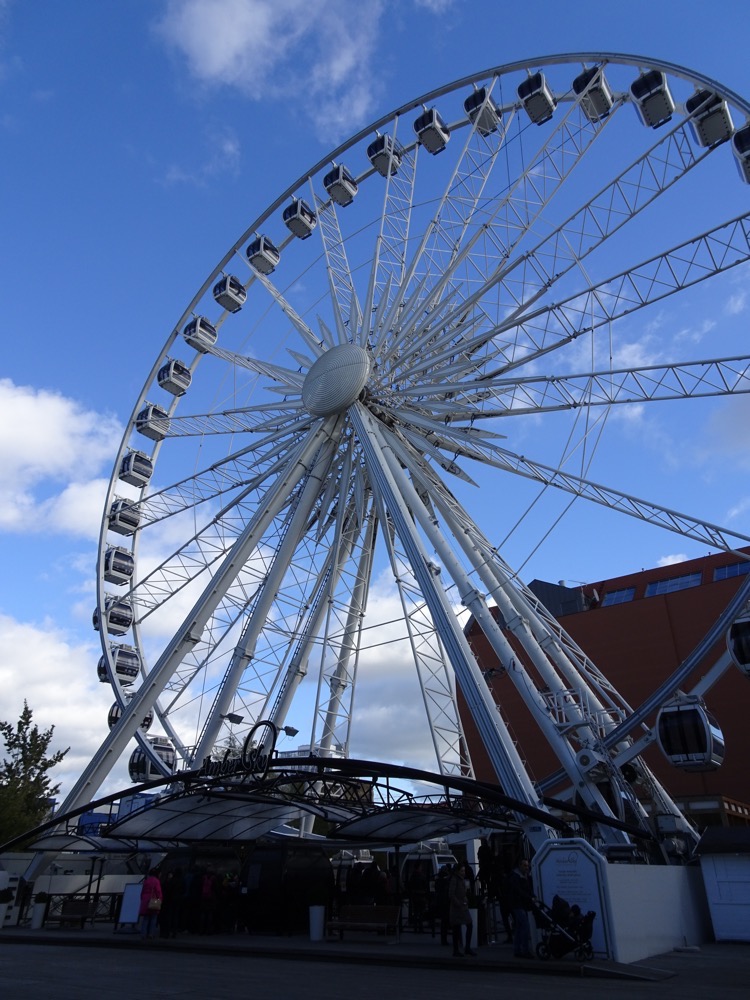
 So we made our way along the waterfront and back into the Old Town to meander through more back streets.
So we made our way along the waterfront and back into the Old Town to meander through more back streets.

 The seemingly modest, Royal Chapel.
The seemingly modest, Royal Chapel. The famous Gdansk treadwheel crane – originally built in 1366, the crane was operated by men in the treadwheel to hoist heavy weights onto ships.
The famous Gdansk treadwheel crane – originally built in 1366, the crane was operated by men in the treadwheel to hoist heavy weights onto ships.


Right beside the riverside and the Treadwheel Crane is the Gdansk Archeological Museum. We had a nice visit in the museum, though there were absolutely zero plaques in English telling us what we were looking at. So I’m guessing your educated guesses are as good as mine on these artefacts.











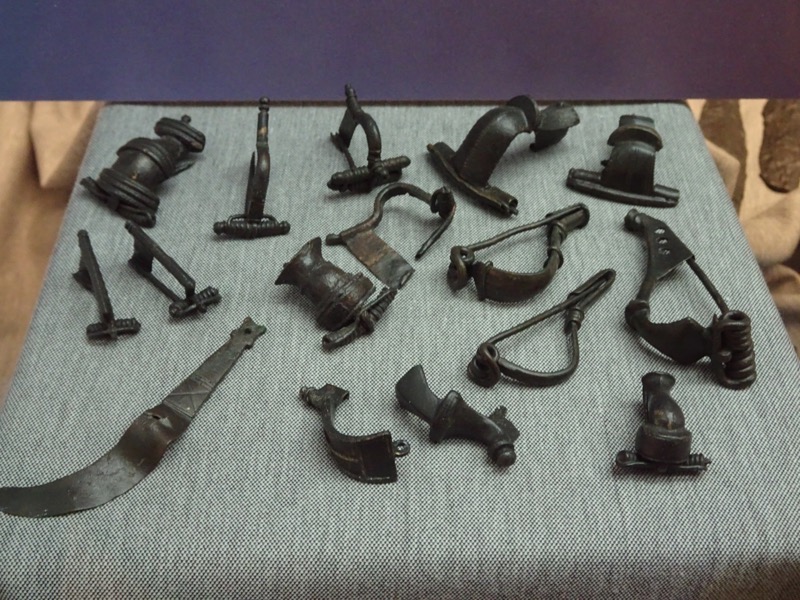





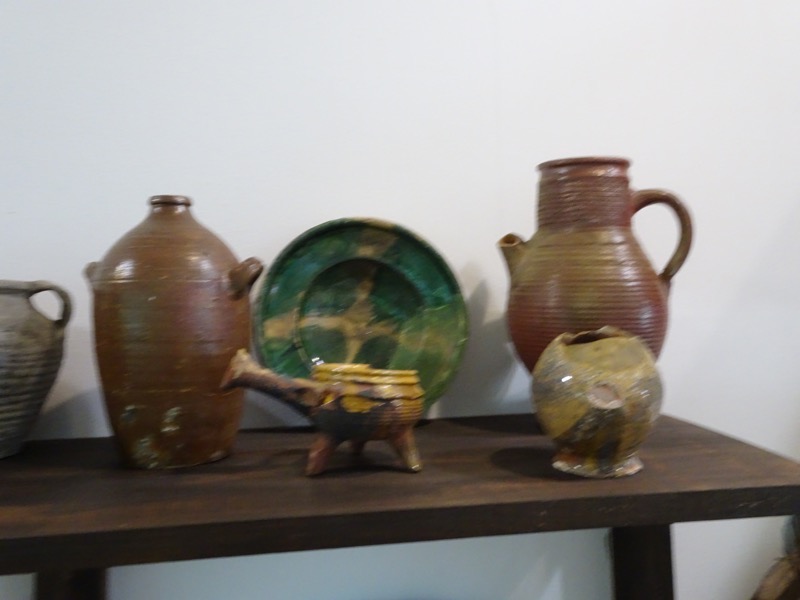

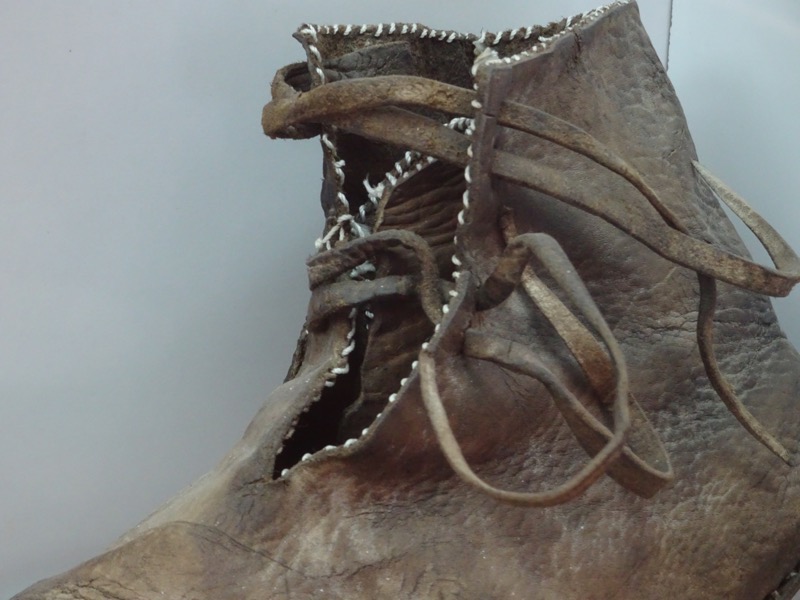
 This was marked – it’s a 10th century viking longboat most likely used for trading and not so much for the war and the pillaging bit.
This was marked – it’s a 10th century viking longboat most likely used for trading and not so much for the war and the pillaging bit.




 The most noteable thing about the Gdansk Archeological Museum is how much of their collection was so completely lost during World War II. The Museum apparently had a remarkable collection of artefacts and now it is a hodge podge of what remains.
The most noteable thing about the Gdansk Archeological Museum is how much of their collection was so completely lost during World War II. The Museum apparently had a remarkable collection of artefacts and now it is a hodge podge of what remains.
After a wonderful day out exploring the city, we decided to look for one of Gdansk’s finest dining establishments – with some leftover Zloty, we thought we’d find somewhere really nice… and with fingers crossed, we might even find some friendly service too! We ended up at ‘Chef, Food & Friends’ and because we have a very early start tomorrow, we went out for a 7pm dinner (read: an unusually early meal time on the Continent) so we had the restaurant entirely to ourselves.
Wines and lager ordered, we then took a moment to drool over the menu.
I had the Beef Tartare with Black Truffles, and it was really good. A lighter on the vinegar than you might expect, but lovely citrus and onion flavours with just the right hint of truffle. yale splashed out and ordered the Fried Foie Gras which was served with a beetroot sponge and truffle mousse – the sponge was light and fluffy as to be souffle-like, and the foie gras was rich and in a really meaty flavoursome sauce.
yale splashed out and ordered the Fried Foie Gras which was served with a beetroot sponge and truffle mousse – the sponge was light and fluffy as to be souffle-like, and the foie gras was rich and in a really meaty flavoursome sauce. For a main, I ordered the Pork Tenderloin that came wrapped in bacon was served with pearl buckwheat and caramelised red onion jam. Fabulous!
For a main, I ordered the Pork Tenderloin that came wrapped in bacon was served with pearl buckwheat and caramelised red onion jam. Fabulous! And becaue yale is a bottomless pit, he ordered two mains, Greased “Russian” dumplings with curd cheese filling served with bacon sprinkles and sour cream (the Polish love their sour cream!). These were very tasty also but a bit stodgy for my liking.
And becaue yale is a bottomless pit, he ordered two mains, Greased “Russian” dumplings with curd cheese filling served with bacon sprinkles and sour cream (the Polish love their sour cream!). These were very tasty also but a bit stodgy for my liking. And he also had the Guinea Fowl breast served with truffle potatoes and a vegetable ratatouille… which was also really really good.
And he also had the Guinea Fowl breast served with truffle potatoes and a vegetable ratatouille… which was also really really good. After this, we had to decline dessert – as the portions were much larger than you normally encounter in high-end restaurants. But our waiter was having none of that, said we can’t end our meal there and he brought us some complimentary freezing cold, cherry vodka liqueurs to try.
After this, we had to decline dessert – as the portions were much larger than you normally encounter in high-end restaurants. But our waiter was having none of that, said we can’t end our meal there and he brought us some complimentary freezing cold, cherry vodka liqueurs to try. This stuff is amazing -Lubelska Wisniowka Cherry Vodka – I’m not normally one for cherry flavoured anything, but served freezing cold, it certainly warmed the cockles quicker than anything I’ve ever tried. Only 30% alcohol, I could have had two more.
This stuff is amazing -Lubelska Wisniowka Cherry Vodka – I’m not normally one for cherry flavoured anything, but served freezing cold, it certainly warmed the cockles quicker than anything I’ve ever tried. Only 30% alcohol, I could have had two more.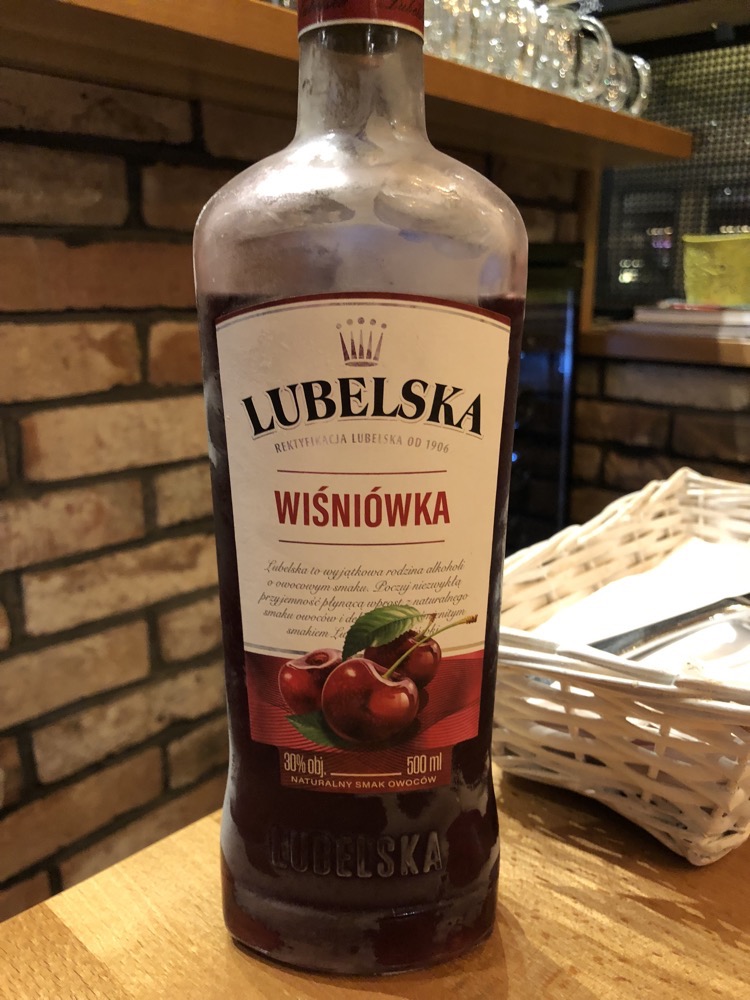
I would certainly recommend this amazing restaurant, Chef Food & Friends – the food was divine, the prices were very reasonable, our meal including alcohol was just over AUD$100 (not looking forward to paying for meals in Euros again), and it was the first time we encountered service staff that seemed friendly and helpful too.
All up we had a great day out in Gdańsk and I would love to come back as there is so much more to see – so many museums we either couldn’t see (Sunday) or didn’t have time to see. I nearly forgot to mention just how completely annihilated Gdańsk was during World War II… it suffered so badly as to look nothing like its current beautiful self. It is a testament to the will and perseverance of the people here, that they have taken the decades necessary to rebuild the city to reflect its previous glory, and not just bulldoze the lot and build parking lots. I feel so thankful that there were obviously people here who survived the war and cared enough about their cultural heritage to rebuild rather than reinvent.
I <3 Gdańsk!

 Much of the walkways and underpasses around the museum were constructed of lava formed stones/rock…
Much of the walkways and underpasses around the museum were constructed of lava formed stones/rock…














 A personal hand mirror with a motif of Mt Fuji from the Edo Period, considered a sacred object.
A personal hand mirror with a motif of Mt Fuji from the Edo Period, considered a sacred object. A piece of molten rock that turned into a projectile during an eruption on Mt Fuji.
A piece of molten rock that turned into a projectile during an eruption on Mt Fuji. The various strata formed by the repeated eruptions – 8m high.
The various strata formed by the repeated eruptions – 8m high. Model of Jason Period home…
Model of Jason Period home… The area has also long been known for it’s textiles, particularly silk, and more recently has gained world renown for its linen manufacturing as well.
The area has also long been known for it’s textiles, particularly silk, and more recently has gained world renown for its linen manufacturing as well. 
 This from 1964…
This from 1964…  And this a contemporary map showing the different routes that hikers take to the summit.
And this a contemporary map showing the different routes that hikers take to the summit.

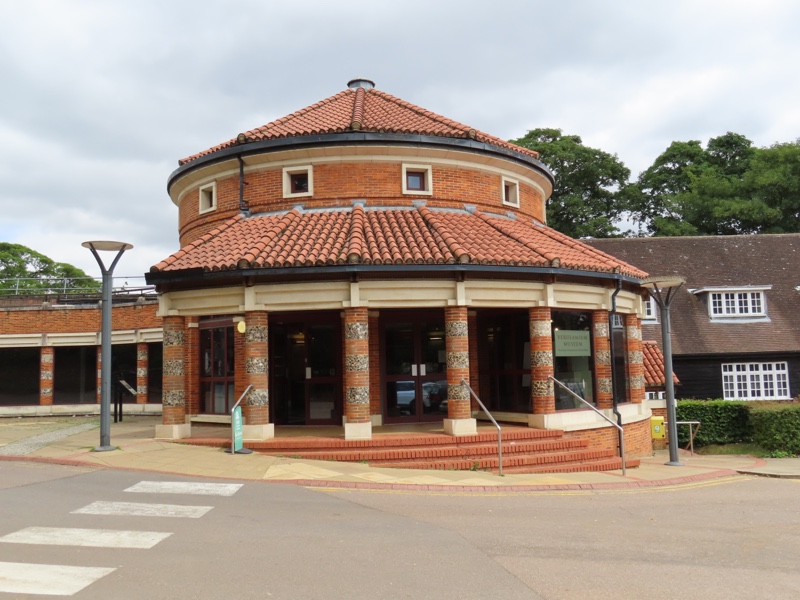 Most of exhibits are pretty much self explanatory given all the artefacts here are from around 50AD when Verulamium was granted
Most of exhibits are pretty much self explanatory given all the artefacts here are from around 50AD when Verulamium was granted 

 Grave goods found buried with wealthy citizens.
Grave goods found buried with wealthy citizens. 
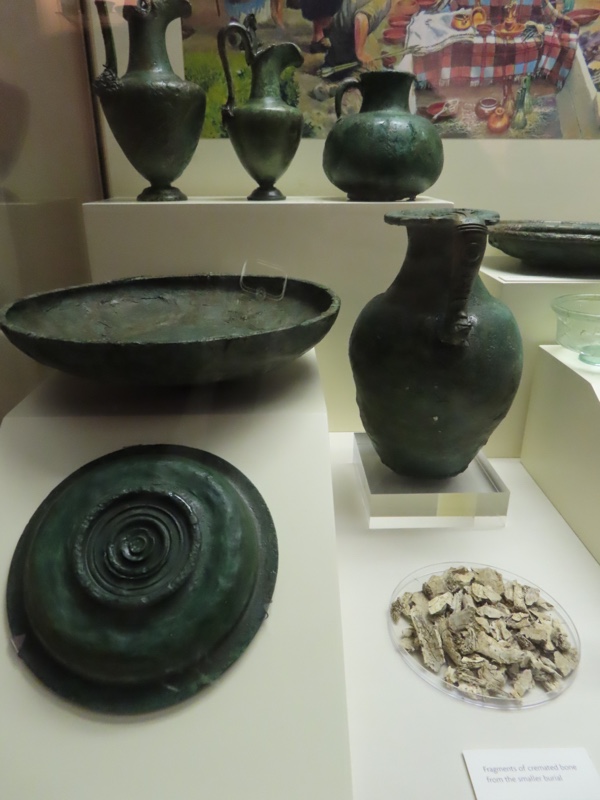
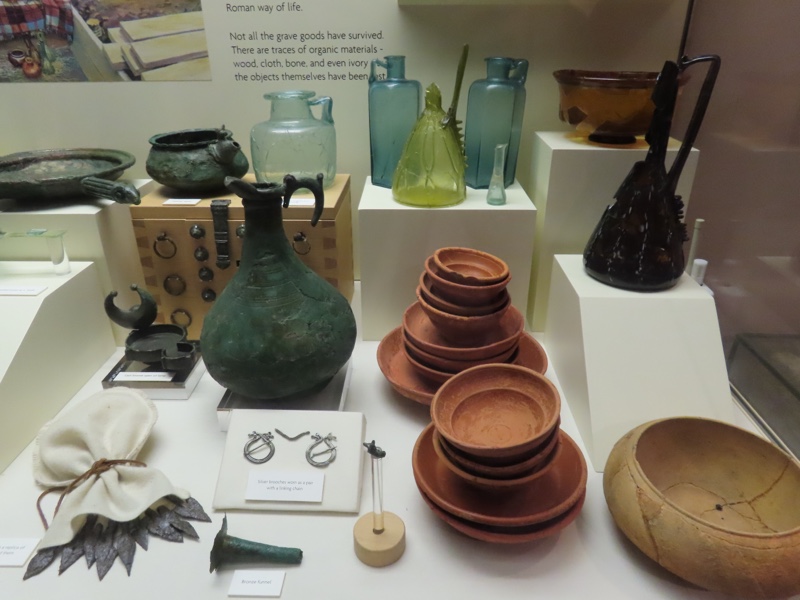
 Interesting loom weights.
Interesting loom weights.  Little model replica of a kiln:
Little model replica of a kiln:








 Infant grave – apparently if a baby didn’t make it to 40 weeks, it would not receive a burial.
Infant grave – apparently if a baby didn’t make it to 40 weeks, it would not receive a burial.

 Some extant fresco panels which have been reconstructed to show what they would have looked like.
Some extant fresco panels which have been reconstructed to show what they would have looked like.

 Samian pottery originated in parts of Gaul (modern France and Rhineland) and was made in vast quantities. It was the most common fine tableware in was made in Roman Britain imported from 50AD to around 225AD. The high glossy finish stems from minerals in the local clays where it was made. It took very particularly skilled potters to fire it to this lovely red colour. Most of it was thrown, but the heavily decorated bowls are done by mould. Ivy leaves were applied to some bowls using a bag and nozzle, (like icing cakes).
Samian pottery originated in parts of Gaul (modern France and Rhineland) and was made in vast quantities. It was the most common fine tableware in was made in Roman Britain imported from 50AD to around 225AD. The high glossy finish stems from minerals in the local clays where it was made. It took very particularly skilled potters to fire it to this lovely red colour. Most of it was thrown, but the heavily decorated bowls are done by mould. Ivy leaves were applied to some bowls using a bag and nozzle, (like icing cakes).
 Pottery oil lamps – these are much smaller than ones I have seen in Italy – about the size of a bar of soap.
Pottery oil lamps – these are much smaller than ones I have seen in Italy – about the size of a bar of soap. Coppersmiths’ work:
Coppersmiths’ work: Blacksmiths’ work:
Blacksmiths’ work:
 This place is well worth a stop for the mosaics alone. They’re truly stunning – I can’t imagine what else lays around the countryside buried in fields.
This place is well worth a stop for the mosaics alone. They’re truly stunning – I can’t imagine what else lays around the countryside buried in fields. 












 The nave is bloody enormous being about 85m long – from the information plaques, this is the longest nave in England.
The nave is bloody enormous being about 85m long – from the information plaques, this is the longest nave in England. 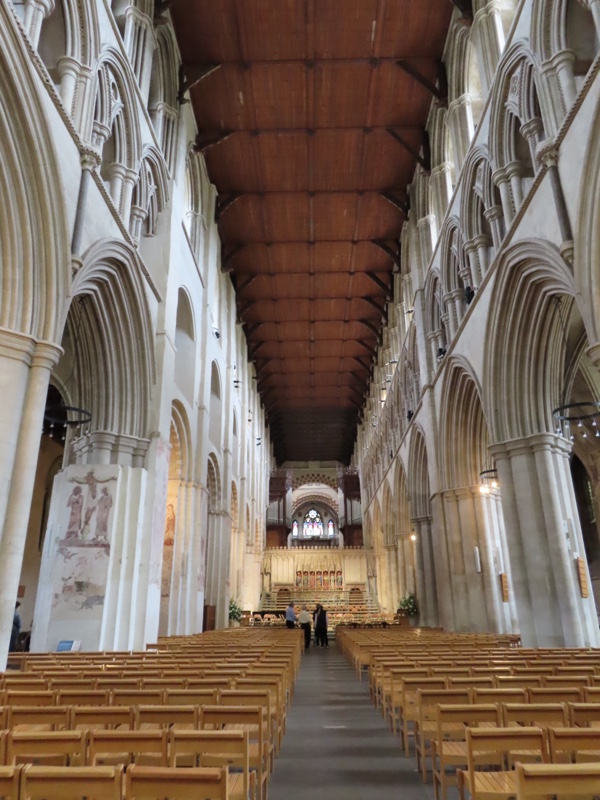
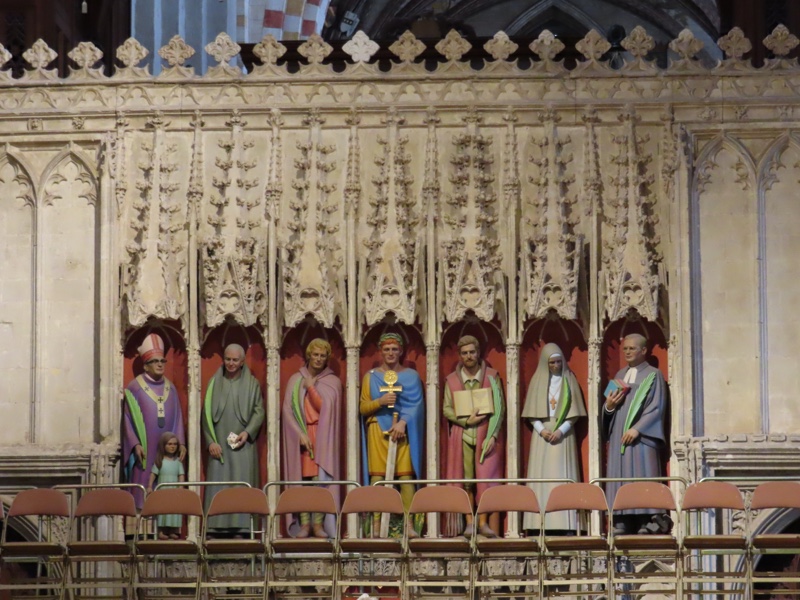

 Ceilings…
Ceilings…

 Of course a cathedral isn’t a cathedral without a rose window…
Of course a cathedral isn’t a cathedral without a rose window…
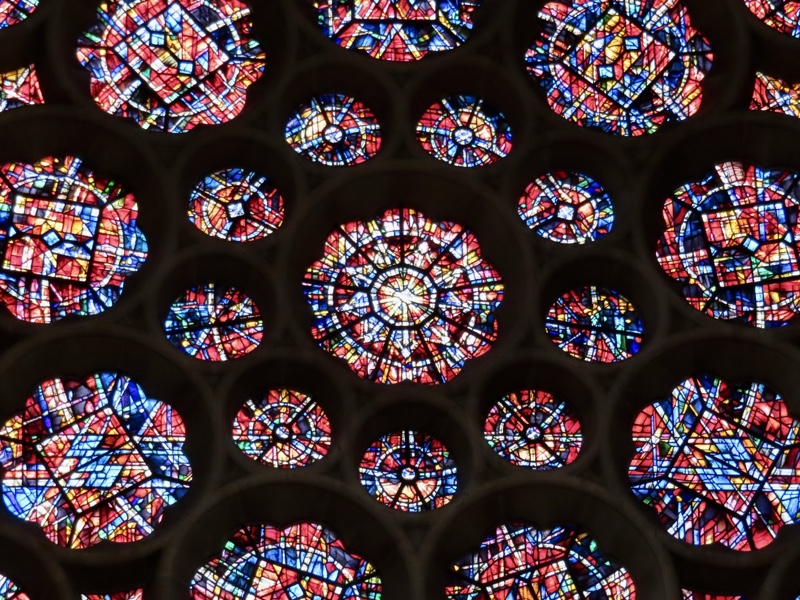 The shrine to St Alban – Britain’s oldest saint.
The shrine to St Alban – Britain’s oldest saint.  On a random column close to the Shrine of St Alaban is this random remaining piece of fresco – the figurative style has the typical elongated hands and 3/4 face that was typical of people being depicted in painting and other decorative arts in the 12thC.
On a random column close to the Shrine of St Alaban is this random remaining piece of fresco – the figurative style has the typical elongated hands and 3/4 face that was typical of people being depicted in painting and other decorative arts in the 12thC. 
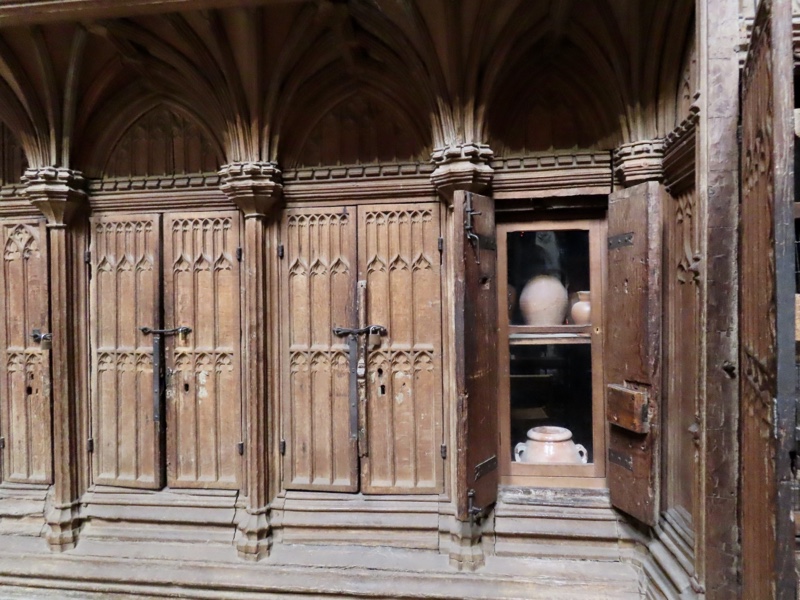 Posh people’s seating…
Posh people’s seating…



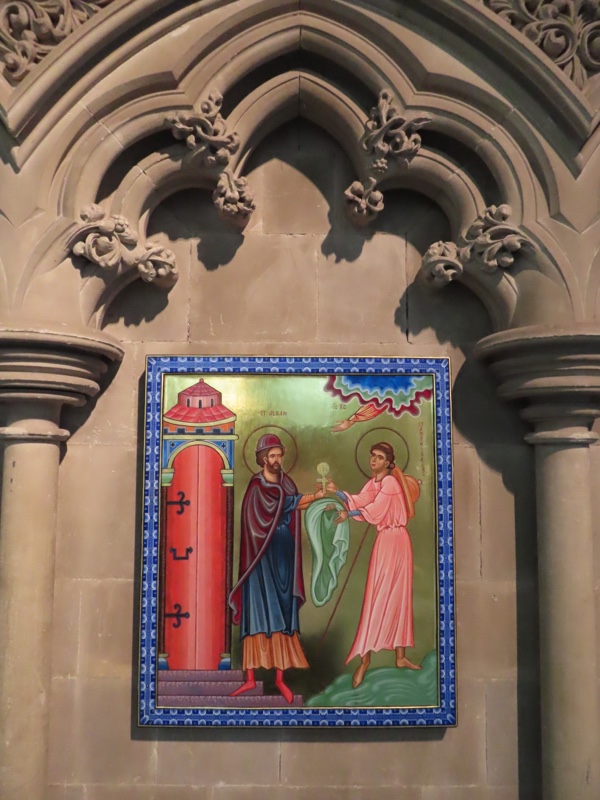



 Fancy trunk with no information connected to it.
Fancy trunk with no information connected to it.


 Some cool artworks depicting the Castle over the various periods, unfortunately, all the descriptions were :
Some cool artworks depicting the Castle over the various periods, unfortunately, all the descriptions were :





 The Shokanzeonbosatsu Temple inside the grounds of Osaka Castle.
The Shokanzeonbosatsu Temple inside the grounds of Osaka Castle.



 The Main Tower of Osaka Castle Park was built in by Hideyoshi Toyotomi in 1583, however, it was not completed until after his death. During the Summer War of 1615, (Toyotomi family vs Tokugawa family) the tower was burned down and rebuilt in 1629. Unfortunately, it was destroyed again in 1665 when it was burned to the ground after being struck by lightning. In 1931, through the donations of the citizens of Osaka, the main town was reconstructed – which is the tower able to be seen today.
The Main Tower of Osaka Castle Park was built in by Hideyoshi Toyotomi in 1583, however, it was not completed until after his death. During the Summer War of 1615, (Toyotomi family vs Tokugawa family) the tower was burned down and rebuilt in 1629. Unfortunately, it was destroyed again in 1665 when it was burned to the ground after being struck by lightning. In 1931, through the donations of the citizens of Osaka, the main town was reconstructed – which is the tower able to be seen today. 
 Now we were aware that the grounds of Osaka Castle has over 4000 cherry blossom trees, but we are considerably south now from Aomori and Hirosaki Castel, and the cherry blossom blooming has been and gone. The trees are all green and people will have to wait until next year to see these parks in all their glory. The only sign we saw at all that indicated how famous this site is for its blossoms was this dried arrangement that was outside a Moet et Chandon tasting tent. I can imagine it would be stunning, the flowers here being more of the pink varieties of cherry blossom rather than the later blooming ones in Aomori. Seeing how fleeing the flowering season is (barely a week this way or that) I feel doubly lucky to have spent such a fairy tale day on our anniversary enjoying a hanami picnic at Hirosaki last Wednesday.
Now we were aware that the grounds of Osaka Castle has over 4000 cherry blossom trees, but we are considerably south now from Aomori and Hirosaki Castel, and the cherry blossom blooming has been and gone. The trees are all green and people will have to wait until next year to see these parks in all their glory. The only sign we saw at all that indicated how famous this site is for its blossoms was this dried arrangement that was outside a Moet et Chandon tasting tent. I can imagine it would be stunning, the flowers here being more of the pink varieties of cherry blossom rather than the later blooming ones in Aomori. Seeing how fleeing the flowering season is (barely a week this way or that) I feel doubly lucky to have spent such a fairy tale day on our anniversary enjoying a hanami picnic at Hirosaki last Wednesday. Also near the Main Tower is a large modern shopping centre full of restaurants and souvenir shops. Some of the goods for sale were stunning and some of them redefining ‘tacky’. We had a wander through the shops and stopped for a takoyaki snack. Takoyaki seems to be a local favourite.
Also near the Main Tower is a large modern shopping centre full of restaurants and souvenir shops. Some of the goods for sale were stunning and some of them redefining ‘tacky’. We had a wander through the shops and stopped for a takoyaki snack. Takoyaki seems to be a local favourite. 
 These are ceramic chopstick rests made to look like foods:
These are ceramic chopstick rests made to look like foods: Weirdly, there was heaps of takoyaki designed souvenirs… with lots of happy looking squids and happy smiley balls of batter?!
Weirdly, there was heaps of takoyaki designed souvenirs… with lots of happy looking squids and happy smiley balls of batter?!


 The museum was a lovely modern facility – you work your way down from the 10th floor which starts off talking about excavations of the 7-8th C Naniwa Palace and works it way down to contemporary Osaka as you move down the floors.
The museum was a lovely modern facility – you work your way down from the 10th floor which starts off talking about excavations of the 7-8th C Naniwa Palace and works it way down to contemporary Osaka as you move down the floors. There are some gorgeous views from the upper floors of the Osaka Castle grounds and you can see really how imposing those moats were!
There are some gorgeous views from the upper floors of the Osaka Castle grounds and you can see really how imposing those moats were!
 There were various displays of decorative arts – scrolls, paintings, ceramics, some artefacts from the earliest periods of the area. But I generally felt the museum was light on extant items and relied fairly heavily on interactive displays and recreated objects.
There were various displays of decorative arts – scrolls, paintings, ceramics, some artefacts from the earliest periods of the area. But I generally felt the museum was light on extant items and relied fairly heavily on interactive displays and recreated objects.



 Traditional writing desk for writers of the Bunraku puppet theatres:
Traditional writing desk for writers of the Bunraku puppet theatres:
 The Beauties by Tukioka Settei, 18th C.
The Beauties by Tukioka Settei, 18th C. Apes and wasp by Mori Sosen, 18th – 19th C.
Apes and wasp by Mori Sosen, 18th – 19th C. Funghi and Parrot by Mitani Totei, 18th C… though for the life of me I can’t figure out why there is an Australian sulphur-crested cockatoo depicted on an 18th C Japanese scroll!
Funghi and Parrot by Mitani Totei, 18th C… though for the life of me I can’t figure out why there is an Australian sulphur-crested cockatoo depicted on an 18th C Japanese scroll!

 Flag with signatures for a Japanese soldier,1938.
Flag with signatures for a Japanese soldier,1938.
 Votive plaques from the late 19th C.
Votive plaques from the late 19th C.

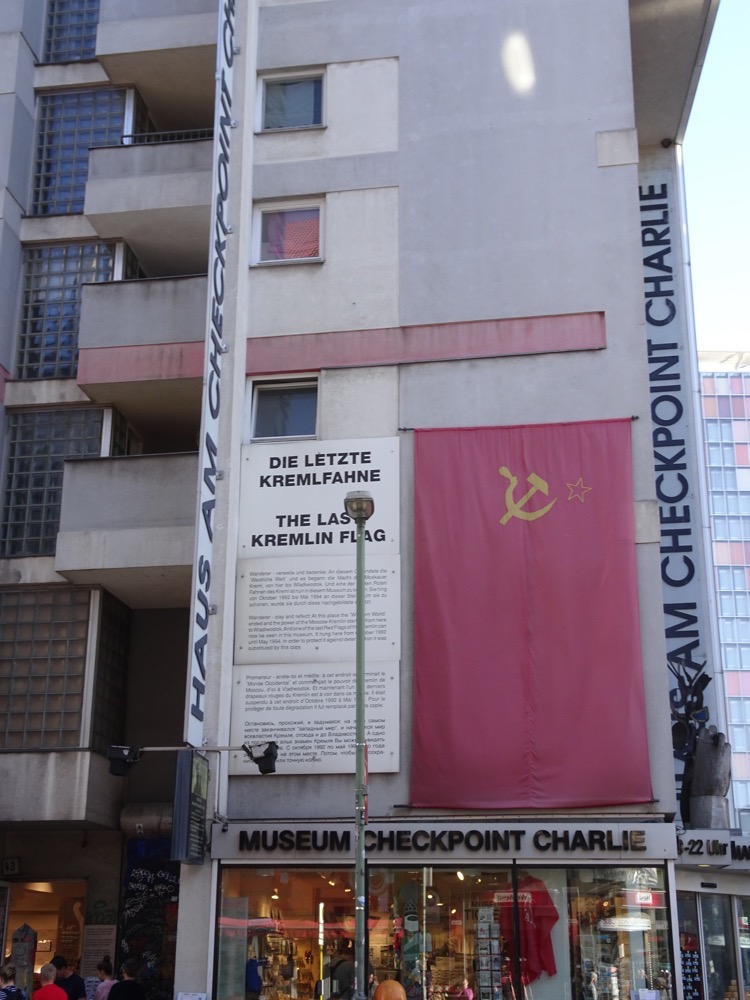 Train stations in Berlin are nowhere near as deep as London, New York or Kyiv and definitely not as pretty as Moscow or St Petersburg – but some of them make a striking statement. At the Checkpoint Charlie end:
Train stations in Berlin are nowhere near as deep as London, New York or Kyiv and definitely not as pretty as Moscow or St Petersburg – but some of them make a striking statement. At the Checkpoint Charlie end: And copies of golden mosaics representing historical rulers of Saxony, Prussia and who knows where else, at the other end.
And copies of golden mosaics representing historical rulers of Saxony, Prussia and who knows where else, at the other end.
 I haven’t managed to photograph many Berlin Bears – whenever we see them, there are usually annoying tourist standing with them for ten minutes or more trying to get that elusive perfect selfie, so we have mostly just passed by them.
I haven’t managed to photograph many Berlin Bears – whenever we see them, there are usually annoying tourist standing with them for ten minutes or more trying to get that elusive perfect selfie, so we have mostly just passed by them.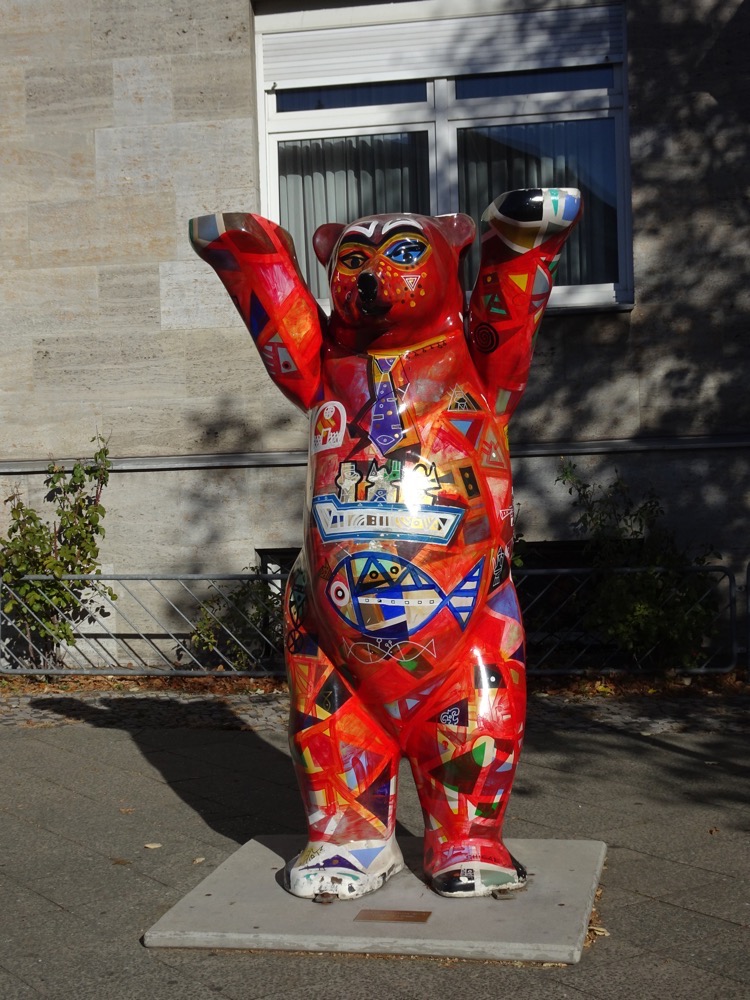 Charlottenburg Palace was originally built at the end of the 17th century, and then expanded upon enormously following century. It is done in extravagant baroque and rococo styles as of course was fitting for the woman who commissioned it, Sophie Charlotte, the wife of Friedrich I who was Elector of Brandenburg at the time.
Charlottenburg Palace was originally built at the end of the 17th century, and then expanded upon enormously following century. It is done in extravagant baroque and rococo styles as of course was fitting for the woman who commissioned it, Sophie Charlotte, the wife of Friedrich I who was Elector of Brandenburg at the time. Friedrich crowned himself as King Friedrich I in Prussia in 1701 having two years earlier appointed Johann Friedrich von Eosander to be his royal architect on the extension project. Von Eosander spent a great deal of time in Italy and France studying places like Versailles, and I think that influence is fairly evident. When the royal architect returned in 1702 he put into place his plans to extend the palace to have two large wings and a courtyard in the front, and to also extend the entire length of the main building as well. Poor Sophie Charlotte died in 1705, long before it was finished and Friedrich named the palace, ‘Charlottenburg’ in her memory. Mind you, that’s him up there on that horse right out front of the place… not her.
Friedrich crowned himself as King Friedrich I in Prussia in 1701 having two years earlier appointed Johann Friedrich von Eosander to be his royal architect on the extension project. Von Eosander spent a great deal of time in Italy and France studying places like Versailles, and I think that influence is fairly evident. When the royal architect returned in 1702 he put into place his plans to extend the palace to have two large wings and a courtyard in the front, and to also extend the entire length of the main building as well. Poor Sophie Charlotte died in 1705, long before it was finished and Friedrich named the palace, ‘Charlottenburg’ in her memory. Mind you, that’s him up there on that horse right out front of the place… not her. The Orangerie off to the left side of the palace.
The Orangerie off to the left side of the palace. The dressing room to the ‘Mecklenburg Apartment’ which comprises of three rooms that were used to receive relatives from the House of Mecklenburg. The relief images above the doors are all original as are the parquetry floors, the fireplace and wooden panelling.
The dressing room to the ‘Mecklenburg Apartment’ which comprises of three rooms that were used to receive relatives from the House of Mecklenburg. The relief images above the doors are all original as are the parquetry floors, the fireplace and wooden panelling.


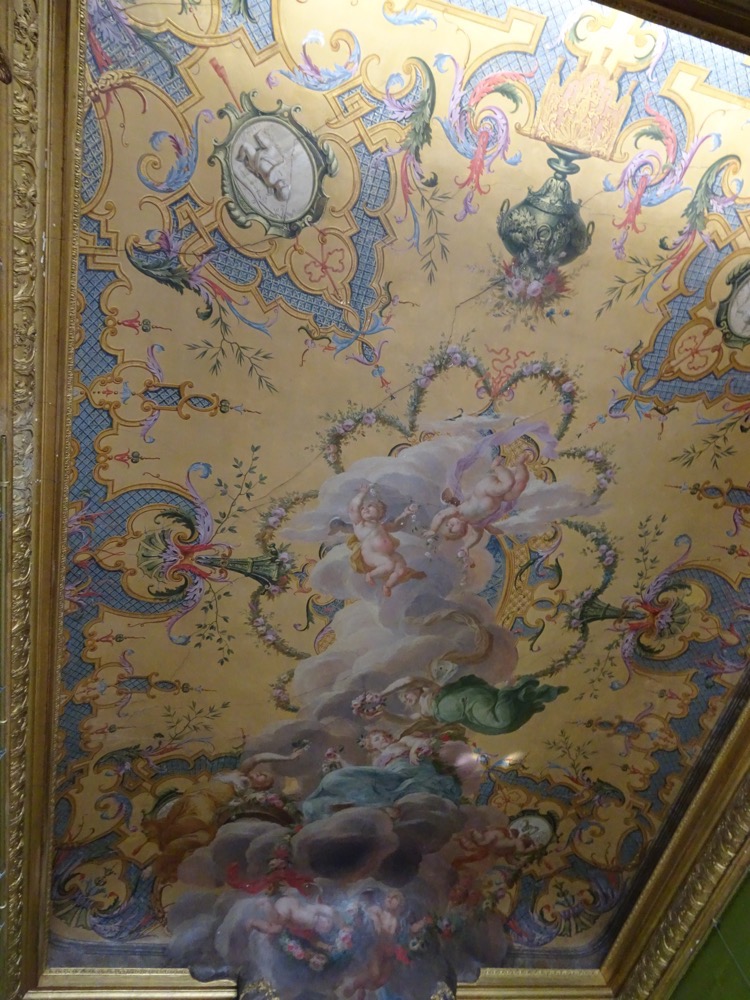
 The Old Gallery – this was damaged considerably in 1943, so the oak panelling and the paintings are all copies.
The Old Gallery – this was damaged considerably in 1943, so the oak panelling and the paintings are all copies.  There is a pair of these candlesticks, but they are in vitrines so far apart that it’s nearly impossible to photograph the pair together. They were made for King Frederick William I from the Silver Buffet at the Berlin Palace. The candlesticks were entirely cast in solid silver and are the last items remaining of the Prussian royal palaces’ silver setting. Friedrich apparently placed extensive commissions with the south German master goldsmiths of Auber (more than any other German Prince) and his orders for just three years from 1730 to 1733 included 85 silver objects with a total weight of over 8 tonnes. Only six works have survived including these two (of ten) candlesticks. All the other works were melted down in the mid 1700s and early 1800s. They’re enormous – all monograms and Prussian eagles.
There is a pair of these candlesticks, but they are in vitrines so far apart that it’s nearly impossible to photograph the pair together. They were made for King Frederick William I from the Silver Buffet at the Berlin Palace. The candlesticks were entirely cast in solid silver and are the last items remaining of the Prussian royal palaces’ silver setting. Friedrich apparently placed extensive commissions with the south German master goldsmiths of Auber (more than any other German Prince) and his orders for just three years from 1730 to 1733 included 85 silver objects with a total weight of over 8 tonnes. Only six works have survived including these two (of ten) candlesticks. All the other works were melted down in the mid 1700s and early 1800s. They’re enormous – all monograms and Prussian eagles.
 The aptly named, Mirror Panelled Bed Chamber was part of Sophie’s original five room apartments. The mirrors were to reflect the lavish gardens outside.
The aptly named, Mirror Panelled Bed Chamber was part of Sophie’s original five room apartments. The mirrors were to reflect the lavish gardens outside. This section of the Palace too, was badly damanged in WWII and has been recreated to be a fair approximation of what was here earlier.
This section of the Palace too, was badly damanged in WWII and has been recreated to be a fair approximation of what was here earlier.
 One of Sophie’s antechambers.
One of Sophie’s antechambers.
 Cupid and Psyche are kinda evident everywhere.
Cupid and Psyche are kinda evident everywhere. The Long Oval Hall was an entrance and recption area before the palace was extended, after which it became one of Sophie’s private rooms, it has exceptional views out to the gardens. But again was severly damaged in WWII so has also been recreated.
The Long Oval Hall was an entrance and recption area before the palace was extended, after which it became one of Sophie’s private rooms, it has exceptional views out to the gardens. But again was severly damaged in WWII so has also been recreated. As we moved through the Palace we noticed quite a few chinoiserie ceramics. There seemed to be quite a lot of them for a palace of this style/age… little did we know.
As we moved through the Palace we noticed quite a few chinoiserie ceramics. There seemed to be quite a lot of them for a palace of this style/age… little did we know.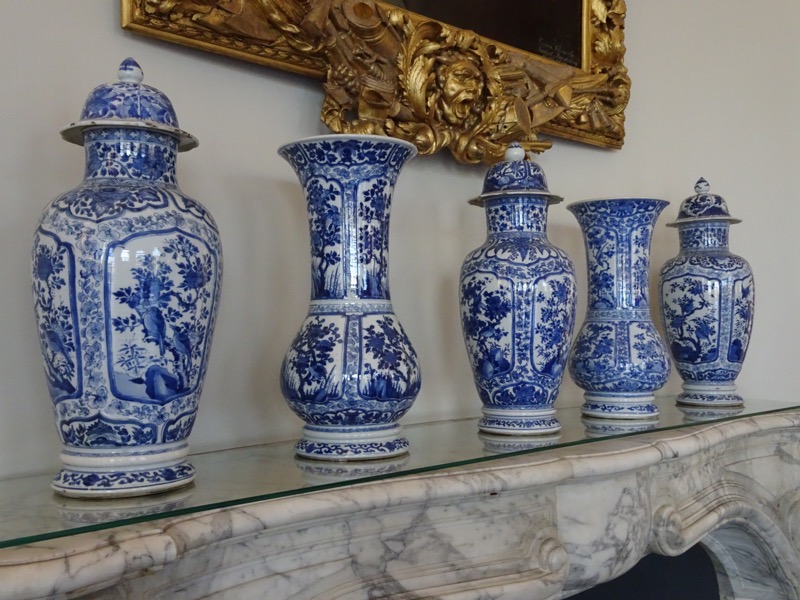 The Long Oval overlooked the formal gardens.
The Long Oval overlooked the formal gardens.
 After Sophie’s death, Frederick used her second antechamber as a small audience chamber. The tapestries were added in 1740 by his grandson, however, all in here was also damaged so is copied or reconstructed. One of the placards I read in here said all the fireplaces had been deliberately built to have consoles for displaying porcelain.
After Sophie’s death, Frederick used her second antechamber as a small audience chamber. The tapestries were added in 1740 by his grandson, however, all in here was also damaged so is copied or reconstructed. One of the placards I read in here said all the fireplaces had been deliberately built to have consoles for displaying porcelain.

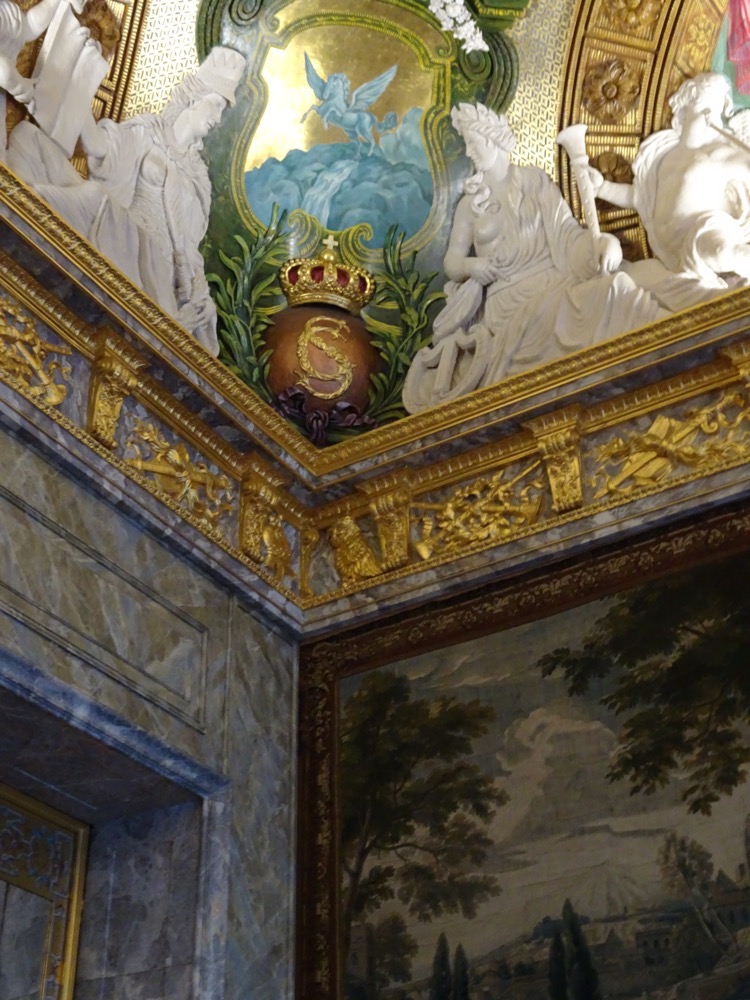 Another audience chamber, also demonstrating their particular fondness for ceramics.
Another audience chamber, also demonstrating their particular fondness for ceramics.
 And a third audience chamber… there was little to indicate whether all these audience chambers served different purposes or were for people of varying levels of acquaintance (well nothing I saw in English anyway). However, this room indicated that it was for private audiences with intimate members of the family and the King and his guest would have chairs of equal size. It also had the most amazing ceiling that is painted on canvas and survived the war, so it is the original art.
And a third audience chamber… there was little to indicate whether all these audience chambers served different purposes or were for people of varying levels of acquaintance (well nothing I saw in English anyway). However, this room indicated that it was for private audiences with intimate members of the family and the King and his guest would have chairs of equal size. It also had the most amazing ceiling that is painted on canvas and survived the war, so it is the original art. and more porcelain of course.
and more porcelain of course.
 Which then led into ‘the Porcelain Cabinet’
Which then led into ‘the Porcelain Cabinet’ “The Porcelain Cabinet is the magnificent highlight of the 140m long flight of rooms on the palace’s garden side. However, when Sophie Charlotte died in 1705, the construction works were by no means finished and were not in fact completed until 1706. The walls have been designed in a way that shows the porcelain and figural motifs off to their best advantage. The ceiling murals painted in 1706 by Anthonie Coxie, are allegorical images glorifying the rise of the Prussian royal dynasty. The Cabinet was heavily damaged in 1943 and restored in 1967.”
“The Porcelain Cabinet is the magnificent highlight of the 140m long flight of rooms on the palace’s garden side. However, when Sophie Charlotte died in 1705, the construction works were by no means finished and were not in fact completed until 1706. The walls have been designed in a way that shows the porcelain and figural motifs off to their best advantage. The ceiling murals painted in 1706 by Anthonie Coxie, are allegorical images glorifying the rise of the Prussian royal dynasty. The Cabinet was heavily damaged in 1943 and restored in 1967.” My how our sensibilities of what is ‘beautiful’ has changed.
My how our sensibilities of what is ‘beautiful’ has changed.
 Next to the Porcelain Cabinet is the Royal Chapel – lavishly gilded and heavily ornamented.
Next to the Porcelain Cabinet is the Royal Chapel – lavishly gilded and heavily ornamented.
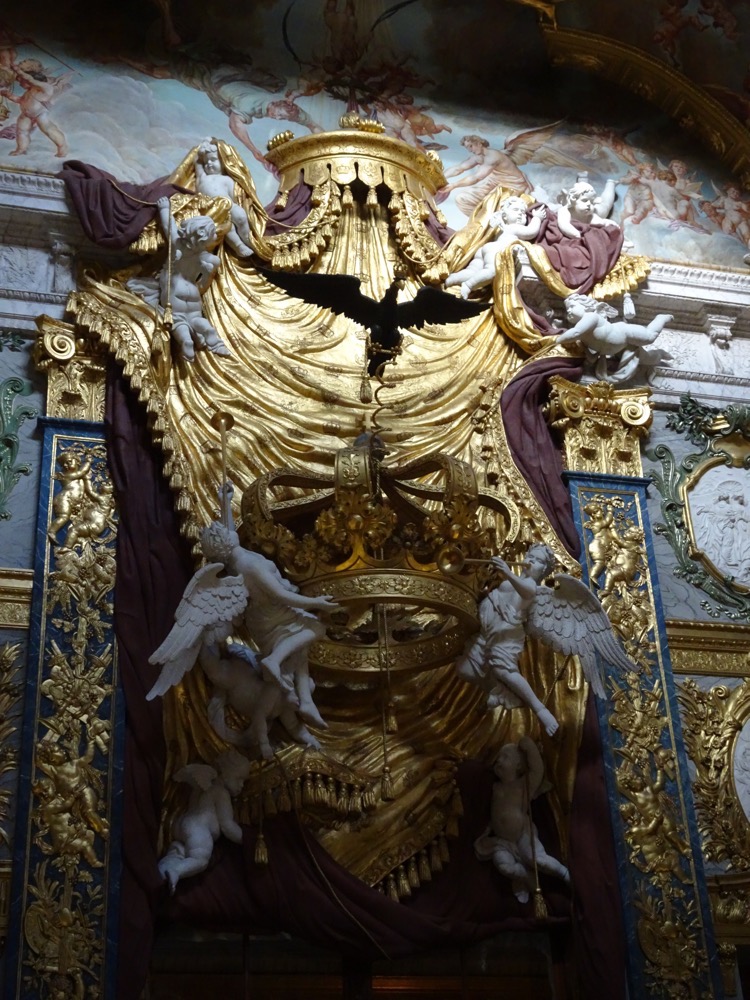
 With its own miniature pipe organ.
With its own miniature pipe organ. Portrait gallery on the way out.
Portrait gallery on the way out.

 You exit through a servants entrance cleverly hidden under the stairs. The tour is supposed to continue on through the upper apartments, but there is a rope telling us it is closed. This is most likely due to the fact that it is October and they don’t want to staff the entire Palace for the winter, so we missed out on another 140m of lavish apartments upstairs.
You exit through a servants entrance cleverly hidden under the stairs. The tour is supposed to continue on through the upper apartments, but there is a rope telling us it is closed. This is most likely due to the fact that it is October and they don’t want to staff the entire Palace for the winter, so we missed out on another 140m of lavish apartments upstairs.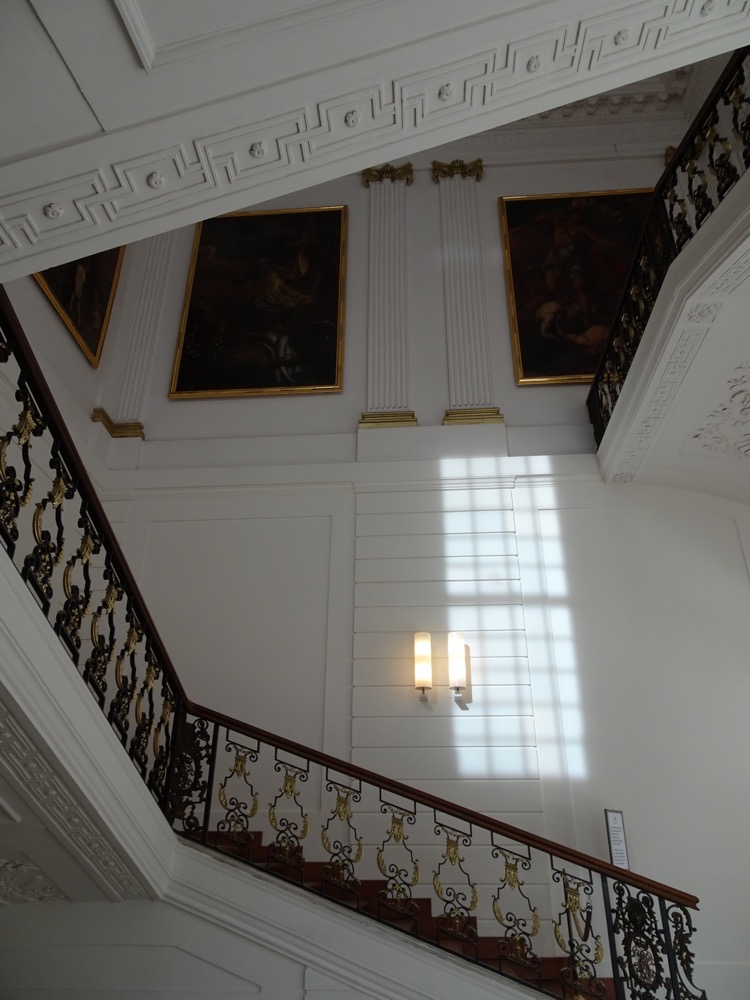 The weather had turned ‘moody’ while we were inside.
The weather had turned ‘moody’ while we were inside.
 One for Leofric that I saw in the gift shop. 🙂
One for Leofric that I saw in the gift shop. 🙂  We walked around the back of the palace to see the formal gardens, but without an elevated viewpoint – it’s difficult to see the impressive design.
We walked around the back of the palace to see the formal gardens, but without an elevated viewpoint – it’s difficult to see the impressive design.
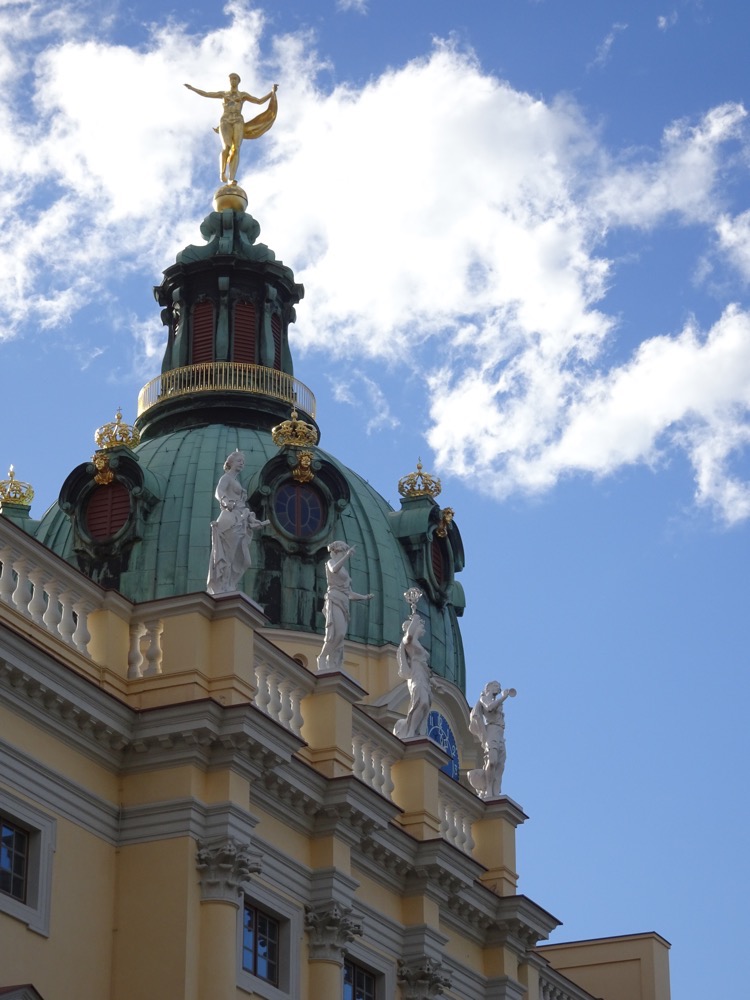



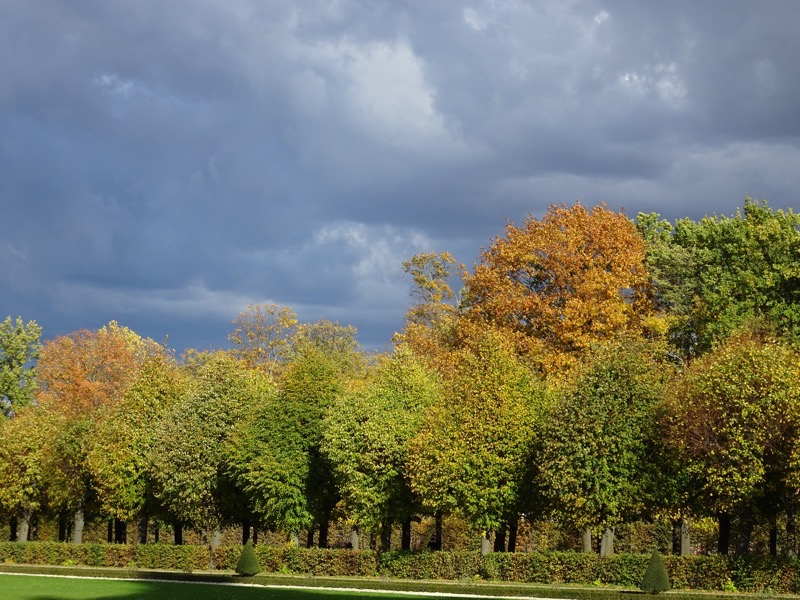

 Wild boar sausage with pierogi :
Wild boar sausage with pierogi : Last Russian honey cake until we go back to Russia or maybe do trans-Siberianan rail trip. 😛
Last Russian honey cake until we go back to Russia or maybe do trans-Siberianan rail trip. 😛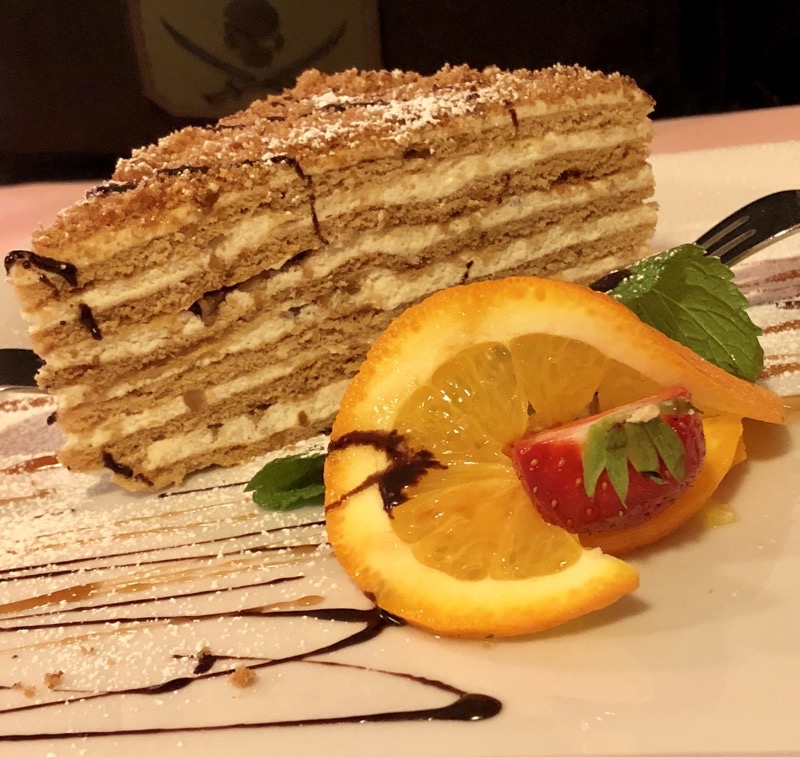 After lunch, we did some masterful navigating of Berlin’s bus and train systems to go see the East Side Gallery. The East Side Gallery is an open-air art gallery which consists of a series of large murals that have been painted directly onto a remnant of the Berlin Wall.
After lunch, we did some masterful navigating of Berlin’s bus and train systems to go see the East Side Gallery. The East Side Gallery is an open-air art gallery which consists of a series of large murals that have been painted directly onto a remnant of the Berlin Wall. 
 The paintings on Mühlenstraße started in 1990 and is over 1.3kms long making it the largest open-air art gallery in the world. There has been a lot of grafitti put on the artworks over the years, and some piece have been restored, but there is controversy over this with many artists refusing to re-do their artworks.
The paintings on Mühlenstraße started in 1990 and is over 1.3kms long making it the largest open-air art gallery in the world. There has been a lot of grafitti put on the artworks over the years, and some piece have been restored, but there is controversy over this with many artists refusing to re-do their artworks.
 Today, it seems most of the art works are being left alone and not being grafitted, but there are areas of the wall where it seems grafitti is encouraged, as this is a living used space.
Today, it seems most of the art works are being left alone and not being grafitted, but there are areas of the wall where it seems grafitti is encouraged, as this is a living used space.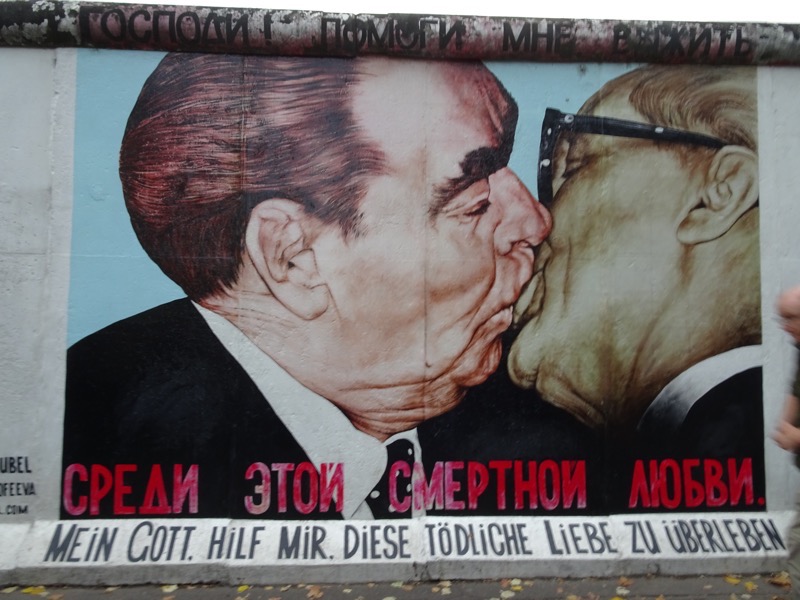 I love this: Moscow…walls; China… walls; Everywhere… no walls (with kangaroo!);, Berlin… walls.
I love this: Moscow…walls; China… walls; Everywhere… no walls (with kangaroo!);, Berlin… walls. This section of wall is all grafitti… the big stenciled work is not an official piece.
This section of wall is all grafitti… the big stenciled work is not an official piece. So we thought this was a good place to leave a small mark.
So we thought this was a good place to leave a small mark.
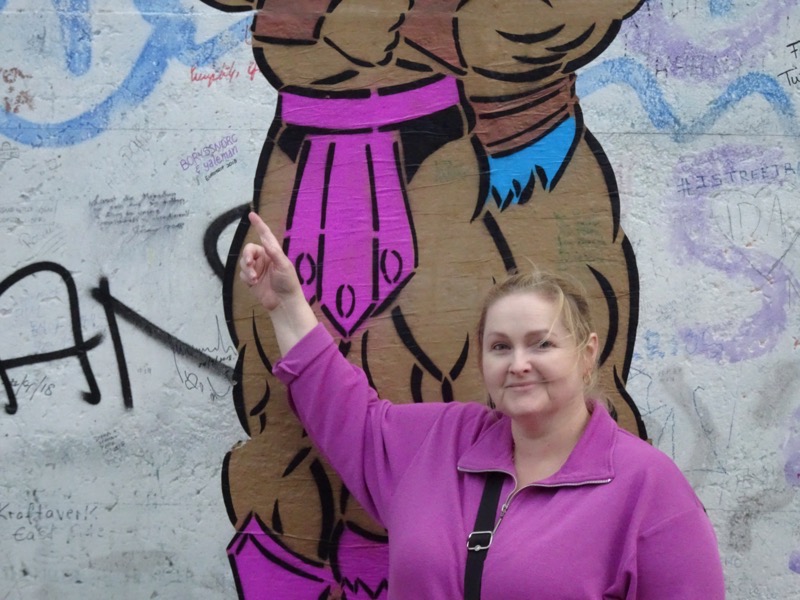



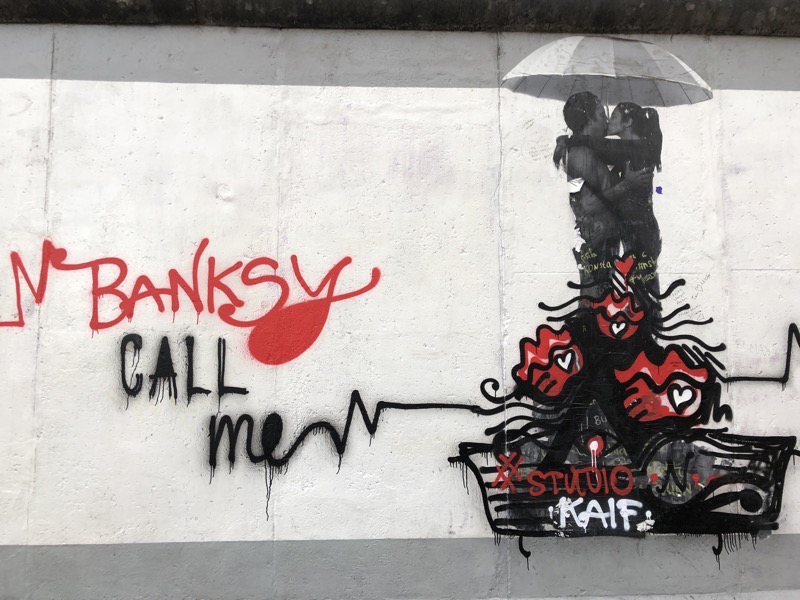
 I know my photos make it look all peaceful and orderly – but of course, it wasn’t.
I know my photos make it look all peaceful and orderly – but of course, it wasn’t.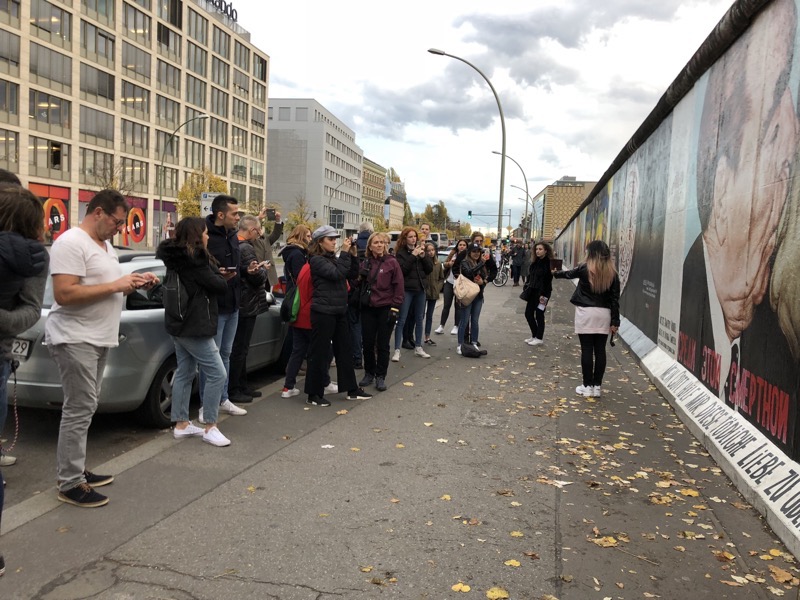


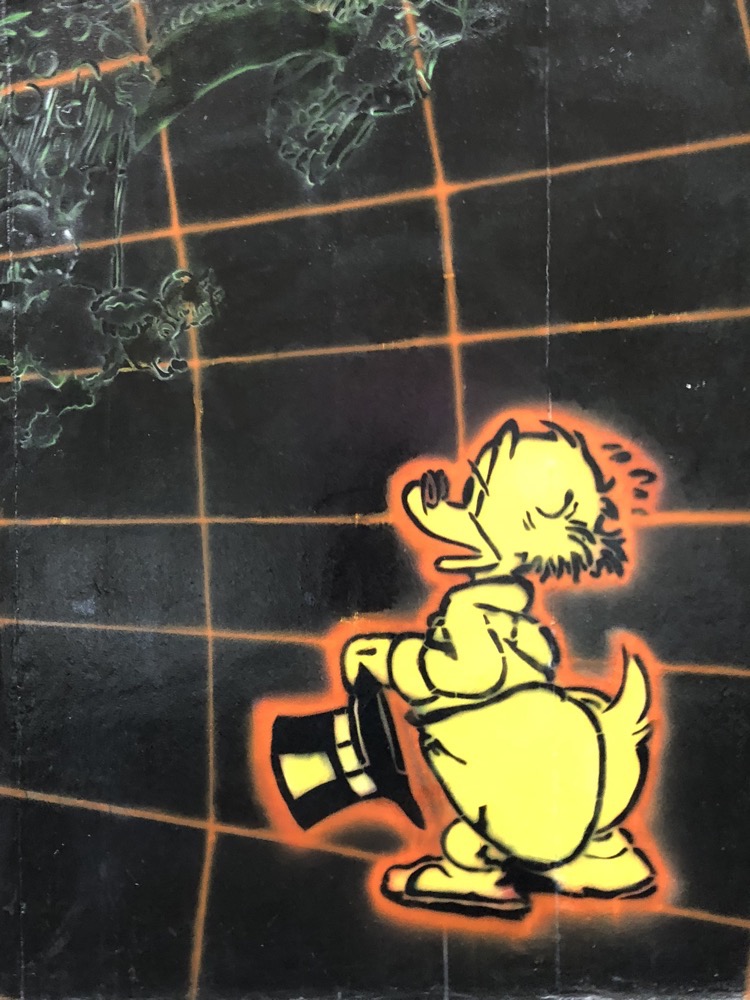
 And it was about this time that our beautiful day with it’s 17C higher in temp then yesterday started to literally rain on our parade. So we hightailed it to the nearest train station and head back to the hotel.
And it was about this time that our beautiful day with it’s 17C higher in temp then yesterday started to literally rain on our parade. So we hightailed it to the nearest train station and head back to the hotel.

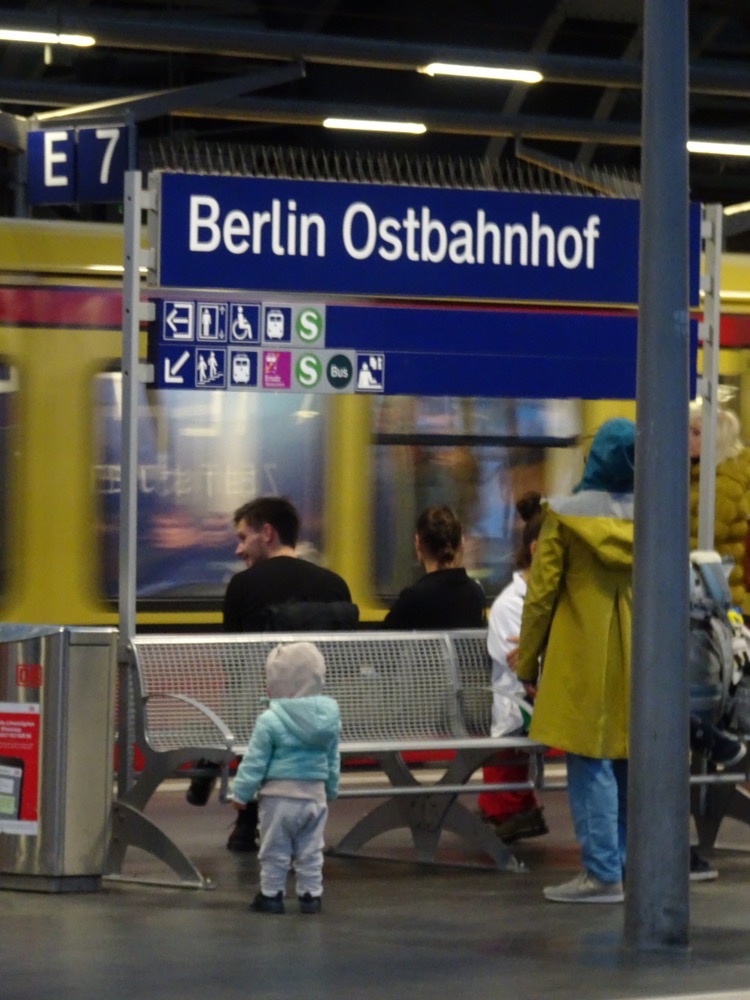 And so ends our last day in Europe… for tomorrow we fly from Berlin to London to Singapore to Brisbane and all things going to plan, we arrive two days from now.
And so ends our last day in Europe… for tomorrow we fly from Berlin to London to Singapore to Brisbane and all things going to plan, we arrive two days from now. The Long Market was established in about the 13th century as a merchant road that led to a large marketplace away from the river, and it became the city’s main thoroughfare. It also became known as the Royal Route in the 15th to 16th centuries because it served as the precessional road for visiting Polish royalty – the monarchs would visit the city and be entertained in the tenement houses along the road, and during the various feasts the city council have fireworks displays here. The most prominent and of course, wealthy, citizens of the Royal City of Gdańsk lived along this route.
The Long Market was established in about the 13th century as a merchant road that led to a large marketplace away from the river, and it became the city’s main thoroughfare. It also became known as the Royal Route in the 15th to 16th centuries because it served as the precessional road for visiting Polish royalty – the monarchs would visit the city and be entertained in the tenement houses along the road, and during the various feasts the city council have fireworks displays here. The most prominent and of course, wealthy, citizens of the Royal City of Gdańsk lived along this route.


 After breakfast, we struck out to explore properly. Refreshingly most of the Old Town is laid out in a grid so instead of winding through confusing little streets, you could stroll down nice straight cobblestoned streets that would also allow you to (mostly) get far enough back to photograph the architectural gates that seemed to be at the end of most roads in the area.
After breakfast, we struck out to explore properly. Refreshingly most of the Old Town is laid out in a grid so instead of winding through confusing little streets, you could stroll down nice straight cobblestoned streets that would also allow you to (mostly) get far enough back to photograph the architectural gates that seemed to be at the end of most roads in the area. All the drainage down pipes have these fantastical stone dragons and gargoyles spitting water into the street – and for a short arse like me, most of them are at shoulder or head height, so they seem like they’d be a bit hazardous in really wet weather!
All the drainage down pipes have these fantastical stone dragons and gargoyles spitting water into the street – and for a short arse like me, most of them are at shoulder or head height, so they seem like they’d be a bit hazardous in really wet weather! The decorative details on all the buildings is just overwhelming, everywhere you look is something new and interesting whether it some stonework, wrought ironwork, frescos, tiles or sculpture… it’s a veritable feast for the eyes.
The decorative details on all the buildings is just overwhelming, everywhere you look is something new and interesting whether it some stonework, wrought ironwork, frescos, tiles or sculpture… it’s a veritable feast for the eyes.
 This is known to be the oldest surviving original building in Gdańsk, knowing as Gotyk House which was built in 1453.
This is known to be the oldest surviving original building in Gdańsk, knowing as Gotyk House which was built in 1453. The tennement houses are lovely…
The tennement houses are lovely… … I want one! Red please. 🙂
… I want one! Red please. 🙂 


 Inside the church is surprisingly stark (like the Frauenkirche in Munich), which was confusing when I first walked in and said to yale, ‘I thought this was a catholic church but it looks kinda Lutheran in here.’, and was again confused when I saw a confessional a bit later… but the dual denomination situation described above kinda explains that I guess.
Inside the church is surprisingly stark (like the Frauenkirche in Munich), which was confusing when I first walked in and said to yale, ‘I thought this was a catholic church but it looks kinda Lutheran in here.’, and was again confused when I saw a confessional a bit later… but the dual denomination situation described above kinda explains that I guess.
 The enormous baptismal font is unusually placed almost right inside the door – about 50m from the nave.
The enormous baptismal font is unusually placed almost right inside the door – about 50m from the nave. We saw this fancy commercial votive candle system – copyrighted in Ireland… sometimes I think we forget that big churches are more run as big business these days.
We saw this fancy commercial votive candle system – copyrighted in Ireland… sometimes I think we forget that big churches are more run as big business these days.
 Anyway, St. Mary’s is a triple-aisled hall church with a triple-aisled transept – which basically means that the main nave and the two adjacent transepts are of roughly similar length, height and width. The building is an excellent example of late Gothic architecture. In the late 1500s to early 1600s the church was rebuilt and enlarged somewhat with the final footprint of the church not being achieved until over 150 years since the initial construction had started.
Anyway, St. Mary’s is a triple-aisled hall church with a triple-aisled transept – which basically means that the main nave and the two adjacent transepts are of roughly similar length, height and width. The building is an excellent example of late Gothic architecture. In the late 1500s to early 1600s the church was rebuilt and enlarged somewhat with the final footprint of the church not being achieved until over 150 years since the initial construction had started. There are so many different donation boxes in this church – all different sizes, and marked to all different causes/saints/purposes.
There are so many different donation boxes in this church – all different sizes, and marked to all different causes/saints/purposes.
 Embroidered banner: ‘God, Honour and Homeland’. No idea what period, but I want to say, late 19th or 20th centuries, just because this place isn’t climate controlled and the goldwork isn’t that tarnished.
Embroidered banner: ‘God, Honour and Homeland’. No idea what period, but I want to say, late 19th or 20th centuries, just because this place isn’t climate controlled and the goldwork isn’t that tarnished.





 The central panel shows Jesus sitting in judgment, while St Michael is weighing souls and sending the damned to Hell, while the saved are being guided to heaven by St Peter and angels.
The central panel shows Jesus sitting in judgment, while St Michael is weighing souls and sending the damned to Hell, while the saved are being guided to heaven by St Peter and angels.

 but here is your little bit o’ medieval weirdness for the day:
but here is your little bit o’ medieval weirdness for the day: This rather incongruous memorial was to remember the 96 victims of a plane crash in Smolensk on 10th April 2011. Lech Kaczyński, the fourth President of the Republic of Poland, was on the Polish Air Force Tu-154 when it crashed outside of Smolensk, as was his wife, First Lady and Economic Minister for Poland at the time.
This rather incongruous memorial was to remember the 96 victims of a plane crash in Smolensk on 10th April 2011. Lech Kaczyński, the fourth President of the Republic of Poland, was on the Polish Air Force Tu-154 when it crashed outside of Smolensk, as was his wife, First Lady and Economic Minister for Poland at the time. Directly opposite this very modern memorial is an enormous medieval astronomical clock. Standing 14m tall, it is said to have been constructed by Hans Düringer between 1464 and 1470. Like every other monumental medeival astronomical clock, it is said that Düringer had his eyes put out after he made it so he could not make another – which begs the question: why would a medieval master clockmaker accept such a commission if ultimately he was going to be blinded to stop him from replicating his work?! Dunno… urban myths alive and well in the middle ages.
Directly opposite this very modern memorial is an enormous medieval astronomical clock. Standing 14m tall, it is said to have been constructed by Hans Düringer between 1464 and 1470. Like every other monumental medeival astronomical clock, it is said that Düringer had his eyes put out after he made it so he could not make another – which begs the question: why would a medieval master clockmaker accept such a commission if ultimately he was going to be blinded to stop him from replicating his work?! Dunno… urban myths alive and well in the middle ages. The clock has some pretty complex dials that show time, date, phases of the moon, the position of the moon and sun in relation to the zodiac signs, and the calendar of saints.
The clock has some pretty complex dials that show time, date, phases of the moon, the position of the moon and sun in relation to the zodiac signs, and the calendar of saints. 


 Another unlabelled, anonymous fresco/sculpture.
Another unlabelled, anonymous fresco/sculpture.
 You can see the altar all pulled apart, and restorers were working on it while we were visiting.
You can see the altar all pulled apart, and restorers were working on it while we were visiting.

 From the altar looking back down the nave – it really is an enromous church.
From the altar looking back down the nave – it really is an enromous church. I think this is a representation of the ten commandments from 1485… there is supposed to be a piece here of that nature, though the artist is unknown.
I think this is a representation of the ten commandments from 1485… there is supposed to be a piece here of that nature, though the artist is unknown.


 Organ – no real church is complete without one.
Organ – no real church is complete without one.
 More medieval paintings with no information or attribution 🙁
More medieval paintings with no information or attribution 🙁 
 Photographing these paintings in this evironment is worse than in a musuem under glass – the camera just can’t handle the brightness ration from the stark white walls and the glare forming from them on the surface of the canvasses is almost impossible to avoid.
Photographing these paintings in this evironment is worse than in a musuem under glass – the camera just can’t handle the brightness ration from the stark white walls and the glare forming from them on the surface of the canvasses is almost impossible to avoid.







 This is me… looking at all these cool paintings and then not being able to find any information on them whatsoever.
This is me… looking at all these cool paintings and then not being able to find any information on them whatsoever.





 Directly outside the armoury, the entire street is largely taken over by amber shops and by souvenir shops. You can face in any direction in this town and see amber for sale.
Directly outside the armoury, the entire street is largely taken over by amber shops and by souvenir shops. You can face in any direction in this town and see amber for sale.



 There are just too many very fancy and impressive buildings in the Long Market. I can’t describe them all, but have included many photographs to show how stunning this town is.
There are just too many very fancy and impressive buildings in the Long Market. I can’t describe them all, but have included many photographs to show how stunning this town is.

 The older High Gate which is attached to the Golden Gate is a Renaissance city gate now at the main vehicular entrance to the Old Town.
The older High Gate which is attached to the Golden Gate is a Renaissance city gate now at the main vehicular entrance to the Old Town. 

 For over two centuries, from 1604 to 1858, this was the largest prison in Europe. Records show no known successful escape attempts, so we can guess it was a pretty effective one at that. Also located in the Prison Tower were Torture Chambers and the hangman’s headquarters which look like a small renaissance palace.
For over two centuries, from 1604 to 1858, this was the largest prison in Europe. Records show no known successful escape attempts, so we can guess it was a pretty effective one at that. Also located in the Prison Tower were Torture Chambers and the hangman’s headquarters which look like a small renaissance palace.





 After this we went through the Golden Gate and back into the Long Market to marvel at the beautiful tennement buildings.
After this we went through the Golden Gate and back into the Long Market to marvel at the beautiful tennement buildings. The Gdańsk Main Town Hall is a historic building located in the middle of the Long Market and it is considered to be one of the best the Gothic-Renaissance style historic buildings in the city. It is built at the intersection of the Long Lane and Long Market, and currently houses the History Museum of the City of Gdańsk and a weird modern art exhibition of Kazakhstani photographers?!
The Gdańsk Main Town Hall is a historic building located in the middle of the Long Market and it is considered to be one of the best the Gothic-Renaissance style historic buildings in the city. It is built at the intersection of the Long Lane and Long Market, and currently houses the History Museum of the City of Gdańsk and a weird modern art exhibition of Kazakhstani photographers?! 

 So many of these beautiful tenement houses have a long and distinguished history all of their own – for example, this red building below is called, the Schumann House. It was designed and built for a man named, Hans Conert the Younger, by an unknown architect in around 1560. The building was known as the King’s House as the top of the house has a sculpture of Zeus. Now, it houses a Tourist Information Centre… but my point is, every one of these buildings has a history.
So many of these beautiful tenement houses have a long and distinguished history all of their own – for example, this red building below is called, the Schumann House. It was designed and built for a man named, Hans Conert the Younger, by an unknown architect in around 1560. The building was known as the King’s House as the top of the house has a sculpture of Zeus. Now, it houses a Tourist Information Centre… but my point is, every one of these buildings has a history. It’s nearly midday and the tourists are finally up and about – I am very glad I came out earlier and took some photos of the empty streets.
It’s nearly midday and the tourists are finally up and about – I am very glad I came out earlier and took some photos of the empty streets.



 Neptune’s Fountain – is an iconic fountain of Gdańsk. It was constructed by a local Mayor, Bartłomiej Schachmann in 1549 and is located outside a building called Artus Court because there was a natural well here. The fountain was proposed and approved in 1549 but didn’t ‘open’ until 1633 due to a series of construction delays – the Artus Court building was being renovated, there were problems with the water system, and then the terribly inconvenient Thirty Years’ War.
Neptune’s Fountain – is an iconic fountain of Gdańsk. It was constructed by a local Mayor, Bartłomiej Schachmann in 1549 and is located outside a building called Artus Court because there was a natural well here. The fountain was proposed and approved in 1549 but didn’t ‘open’ until 1633 due to a series of construction delays – the Artus Court building was being renovated, there were problems with the water system, and then the terribly inconvenient Thirty Years’ War. 

 At the other end of the Long Market – the back of the Green Gate.
At the other end of the Long Market – the back of the Green Gate.
 So many beautiful buildings! It’s simply overwhelming… so many beautiful facades to look at and so many wonderfully detailed frontages.
So many beautiful buildings! It’s simply overwhelming… so many beautiful facades to look at and so many wonderfully detailed frontages.



 More tenement buildings lining the river to either side of the Green Gate.
More tenement buildings lining the river to either side of the Green Gate. Across the river is Granary Island – we popped over there very briefly, but it seemed full of modern hotels, a ferris wheel (called the Amber Sky of course) and several bars that appeared to largely cater to American tourists (Jack Lives Here).
Across the river is Granary Island – we popped over there very briefly, but it seemed full of modern hotels, a ferris wheel (called the Amber Sky of course) and several bars that appeared to largely cater to American tourists (Jack Lives Here).
 So we made our way along the waterfront and back into the Old Town to meander through more back streets.
So we made our way along the waterfront and back into the Old Town to meander through more back streets.

 The seemingly modest, Royal Chapel.
The seemingly modest, Royal Chapel. The famous Gdansk treadwheel crane – originally built in 1366, the crane was operated by men in the treadwheel to hoist heavy weights onto ships.
The famous Gdansk treadwheel crane – originally built in 1366, the crane was operated by men in the treadwheel to hoist heavy weights onto ships.























 This was marked – it’s a 10th century viking longboat most likely used for trading and not so much for the war and the pillaging bit.
This was marked – it’s a 10th century viking longboat most likely used for trading and not so much for the war and the pillaging bit.




 The most noteable thing about the Gdansk Archeological Museum is how much of their collection was so completely lost during World War II. The Museum apparently had a remarkable collection of artefacts and now it is a hodge podge of what remains.
The most noteable thing about the Gdansk Archeological Museum is how much of their collection was so completely lost during World War II. The Museum apparently had a remarkable collection of artefacts and now it is a hodge podge of what remains. yale splashed out and ordered the Fried Foie Gras which was served with a beetroot sponge and truffle mousse – the sponge was light and fluffy as to be souffle-like, and the foie gras was rich and in a really meaty flavoursome sauce.
yale splashed out and ordered the Fried Foie Gras which was served with a beetroot sponge and truffle mousse – the sponge was light and fluffy as to be souffle-like, and the foie gras was rich and in a really meaty flavoursome sauce. For a main, I ordered the Pork Tenderloin that came wrapped in bacon was served with pearl buckwheat and caramelised red onion jam. Fabulous!
For a main, I ordered the Pork Tenderloin that came wrapped in bacon was served with pearl buckwheat and caramelised red onion jam. Fabulous! And becaue yale is a bottomless pit, he ordered two mains, Greased “Russian” dumplings with curd cheese filling served with bacon sprinkles and sour cream (the Polish love their sour cream!). These were very tasty also but a bit stodgy for my liking.
And becaue yale is a bottomless pit, he ordered two mains, Greased “Russian” dumplings with curd cheese filling served with bacon sprinkles and sour cream (the Polish love their sour cream!). These were very tasty also but a bit stodgy for my liking. And he also had the Guinea Fowl breast served with truffle potatoes and a vegetable ratatouille… which was also really really good.
And he also had the Guinea Fowl breast served with truffle potatoes and a vegetable ratatouille… which was also really really good. After this, we had to decline dessert – as the portions were much larger than you normally encounter in high-end restaurants. But our waiter was having none of that, said we can’t end our meal there and he brought us some complimentary freezing cold, cherry vodka liqueurs to try.
After this, we had to decline dessert – as the portions were much larger than you normally encounter in high-end restaurants. But our waiter was having none of that, said we can’t end our meal there and he brought us some complimentary freezing cold, cherry vodka liqueurs to try. This stuff is amazing -Lubelska Wisniowka Cherry Vodka – I’m not normally one for cherry flavoured anything, but served freezing cold, it certainly warmed the cockles quicker than anything I’ve ever tried. Only 30% alcohol, I could have had two more.
This stuff is amazing -Lubelska Wisniowka Cherry Vodka – I’m not normally one for cherry flavoured anything, but served freezing cold, it certainly warmed the cockles quicker than anything I’ve ever tried. Only 30% alcohol, I could have had two more.